
More than 200,000


More than 200,000
By Margaret Foster
As John Lennon once sang, “Life is what happens to you when you’re busy making other plans.”
Scientist and college professor Dr. Kan Cao had spent most of her career studying a rare disease, progeria, which causes premature aging in children.
Eleven years ago, in her research lab at the University of Maryland, Cao noticed something unusual: Cells with misshapen, diseased nuclei suddenly looked plump and healthy when accidentally exposed to a common lab stain called methylene blue.
“That happens in scientific research a lot,” Cao said in an interview with the Beacon “We want to research A, have a hypothesis, but in the end, we discover B.”
First, she published her findings on progeria. Then she did what most scientists do: asked another lab to repeat the experiment.
The other lab “actually observed the same thing,” Cao recalled. “Then I became more serious” about methylene blue, both to extend the lives of those with progeria and to preserve the skin cells of people as they age normally.
When Cao told the university about her findings, they were as excited as she was. Its Ventures program, which helps the school’s faculty and students commercialize their research breakthroughs, paired her with an alum, Maryland entrepreneur Jasmin El Kordi, as her CEO.
Today their company, Mblue Labs, has almost a dozen products in its Bluelene skincare line. Now in their seventh year, they opened their own warehouse and logistics office in Beltsville, Maryland, in September.
“We’re not a beauty company,” said El Kordi. “We’re a scientific company that made an incredible discovery that reverses human aging.”


which formulates a line of 11 anti-aging Bluelene products. Last year the U.S. Department of Commerce named the University of Maryland portfolio company one of America’s top 100 small businesses.
Cao, who grew up in China, received her undergraduate degree in biology in Nanjing. She moved to Maryland to attend graduate school at Johns Hopkins.
With a Ph.D. in biology, Cao began her postdoc in genomics at the National Institutes of Health in 2005. That’s when Francis
Collins, longtime director of NIH, tapped her to start researching progeria. In his lab, Cao’s experiments were “exquisitely designed and beautifully conducted,” Collins told the University of Maryland.
Cao became one of the country’s leading


I want to thank the thousands of readers and their guests who attended our 26th annual 50+Expo events in Maryland and Virginia recently.
Our entire staff spent months preparing our Expos, which offered attendees numerous health screenings, important vaccinations, and nearly 150 exhibitors, including government agencies, nonprofits and area businesses sharing information, resource materials, volunteer opportunities and gobs of chocolate and useful giveaways.
fected them or members of their family. I was very touched by that.

By Stuart P. Rosenthal
I was especially happy to see so many familiar faces and to have a chance to speak with you, catch up on your lives, and hear your views on the issues of the day. More than one of you told me you have attended each of our Expos for more than 20 years!
Of course, I’d be lying if I didn’t admit that one of the best parts was hearing all the glowing compliments people shared with me about the Beacon, our writers, our sales staff and the events themselves. On a personal note, several took me aside to tell me how one of my recent columns had af-
Our exhibitors were equally happy to have the opportunity to meet so many active older adults who were sincerely interested in the housing communities, health providers, financial and legal advisors, recreation and travel opportunities, and community resources that participated.
I want to thank our hardworking staff for putting together these fantastic events. I also want to thank our gold sponsors: AARP Virginia and Giant Pharmacy who, together with our many other sponsors, made the free events possible.
In addition, Giant deserves special thanks for providing a variety of vaccines and health screenings. We also thank new exhibitor, Georgetown University Ophthalmology Department, for offering glaucoma screenings this year.
We are already making plans for next fall’s Expos and intend for them to be even bigger and better than this year’s.
As we enter the holiday season and the
year draws to a close, I want to add here my thanks to, and admiration for, everyone on the Beacon staff. It takes diligent work from each of them to keep our printed publications and website brimming with useful content (and relevant advertising) month after month.
I’d like to thank each of them here by name: Executive Vice President Gordon Hasenei ; Vice President of Operations Roger King; Art Director Kyle Gregory; Editor Margaret Foster; Assistant Editor Ana Preger Hart; Editorial Assistant Tori Cleveland ; Advertising Representatives Jill Joseph, Steve Levin, M.K. Phillips and Alan Spiegel; and, of course, my wife, the Beacon’s President and Associate Pub-
lisher, Judy Rosenthal
The Beacon would not exist without all of their efforts — nor without you who read our publications each month. I offer my sincere appreciation to each of you, too! Please keep reading the Beacon and encourage your friends to do so as well. And when you call or visit any of our advertisers, please be sure to mention where you saw their ads! It’s their support that keeps the Beacon free.
I wish you and yours a happy and healthy holiday season and new year.

Readers are encouraged to share their opinions on any matter addressed in the Beacon as well as on political and social issues of the day.
Mail your Letter to the Editor to The Beacon, P.O. Box 2227, Silver Spring, MD 20915, or email to info@thebeaconnewspapers.com. Please include your name, address and telephone number for verification.
Dear Editor:

The Beacon is a monthly newspaper dedicated to inform, serve, and entertain the citizens of the Greater Washington DC area, and is privately owned. Other editions serve Greater Baltimore and Howard County, Md.
Subscriptions are available via first-class mail ($50) or third-class mail ($20), prepaid with order. D.C. and Maryland residents: add 6 percent for sales tax. Send subscription order to the office listed below.
Publication of advertising contained herein does not necessarily constitute endorsement. Signed columns represent the opinions of the writers, and not necessarily the opinion of the publisher.
Publisher/Editor Emeritus – Stuart P. Rosenthal
President/Associate Publisher – Judith K. Rosenthal
Executive Vice President – Gordon Hasenei
Editor – Margaret Foster
Art Director – Kyle Gregory
Vice President of Operations – Roger King
Advertising Representatives
Jill Joseph, Steve Levin, M.K. Phillips, Alan Spiegel
Assistant Editor – Ana Preger Hart
Editorial Assistant – Tori Cleveland



The Beacon, P.O. Box 2227, Silver Spring, MD 20915 (301) 949-9766 • Email: info@thebeaconnewspapers.com Website: www.theBeaconNewspapers.com
Submissions: The Beacon welcomes reader contributions. Deadline for editorial is the 10th of the month preceding the month of publication. Deadline for ads is the 15th of the month preceding the month of publication. See page 39 for classified advertising details. Please mail or email all submissions. © Copyright 2025 The Beacon Newspapers, Inc.
Thank you for the great, informative article on the benefits of including a furry member in your family and the health advantages that result when opening up your home and heart to a wonderful pet (“Older pets and owners pair up”). Older pets are especially appreciative of the love and attention you give them, and their relaxed personalities are very accommodating for more mature family members.
Gina Marie Lynch
Mt Vernon, VA
Dear Editor:
I was interested to read your anecdote about “scaring” the old guy you followed into the supermarket (“How we learn to be afraid”). I was reminded of something I experienced years ago while walking early one evening in Old Town Alexandria.
I had just turned off King Street onto N. St. Asaph and found an old lady ahead on the sidewalk, moving slowly. I thought, “I don’t want to scare this old lady,” so I slooooowed my gait and made sure to give her a wide berth to avert fear that someone was rushing up behind her.
Yet she STILL gasped and shrank away dramatically. Once past, I resumed my normal pace, hearing from behind a cranky warble to “Slow down!”
The fact is, old age and its challenges (including frustration with a world that will rush by, whether we like it or not), don’t excuse perpetual bad temper or a constant readiness to feel slighted.
Startled these oldsters may have been, just as a younger person might. But truly afraid? I doubt it.
Nathan Dotson Arlington Ridge, VA
Dear Editor:
Concerning last month’s From the Publisher column, some advice would be to
say, “Excuse me” when passing someone in a store.
In the retirement community where I live, residents say “Hello” when passing from behind. Once, when I walked past someone without saying anything, the person said, “Some people here are so rude!”
Since then, I join others in greeting everyone here with a hello and/or a wave, and a hello when walking past someone. I sometimes just avoid passing people who walk slowly because I would not gain that much time by walking past them.
Name withheld by request Catonsville, MD
Dear Editor:
My take on your November From the Publisher column is that a psychoanalytic approach to understanding the frightened man’s reaction is unnecessary.
I am 80 and, though I use no aids to get around, I am watching every step I take. Chances are the man was using everything he had, mentally, emotionally and physically, to concentrate on getting himself safely where he wanted to go. Your suddenness destabilized him.
This happens to me all the time in this fast world we live in — rushing delivery boys and young children in my senior building’s hallways, in store aisles, on the sidewalk and in parking lots. Frankly, it’s a sock in the (psychic) stomach.
My policy when I am antsy and irritable at being held up, as you were, is to take deep breaths and remind myself that this slow person could be me in the future for any number of reasons.
It takes practice, but it is kinder — and I feel better, too.
Carol Buell Columbia, MD

Urinary symptoms can indicate prostate cancer, so see your doctor
PRIORITIZE
Getting eight hours of sleep can keep your heart healthy
CLEAR THE AIRWAYS
People with COPD can improve their breathing with a few exercises
DRUG MUGGERS
Some common medications can deplete your body’s minerals
By Lauran Neergaard
Scientists are trying a revolutionary new approach to treat rheumatoid arthritis, multiple sclerosis, lupus and other devastating autoimmune diseases — by reprogramming patients’ out-of-whack immune systems.
When your body’s immune cells attack you instead of protecting you, today’s treatments tamp down the friendly fire, but they don’t fix what’s causing it. Patients face a lifetime of pricey pills, shots or infusions with serious side effects — and too often the drugs aren’t enough to keep their disease in check.
“We’re entering a new era,” said Dr. Maximilian Konig, a rheumatologist at Johns Hopkins University who’s studying some of the possible new treatments. They offer “the chance to control disease in a way we’ve never seen before.”
How? Researchers are altering dysfunctional immune systems, not just suppressing them, in a variety of ways that aim to be more potent and more precise than current therapies.
They’re highly experimental and, because of potential side effects, so far largely restricted to patients who’ve exhausted today’s treatments. But people entering early studies are grasping for hope.
“What the heck is wrong with my body?” Mileydy Gonzalez, 35, of New York remembers thinking, frustrated that nothing was helping her daily lupus pain.
Diagnosed at 24, her disease was worsening, attacking her lungs and kidneys.
Gonzalez had trouble breathing, needed help to stand and walk and couldn’t pick up her 3-year-old son when last July, her doctor at NYU Langone Health suggested the hospital’s study using a treatment adapted from cancer: chimeric antigen receptor Tcell therapy, or CAR-T.
Over several months, Gonzalez slowly regained energy and strength.
“I can actually run. I can chase my kid,” said Gonzalez, who now is pain- and pill-free. “I had forgotten what it was like to be me.”
‘Living drugs’ reset systems
CAR-T therapy was developed to wipe out hard-to-treat blood cancers. But the cells that go bad in leukemias and lymphomas — immune cells called B cells — go awry in a different way in many autoimmune diseases.
Some U.S. studies in mice suggested CART therapy might help with those diseases. Then in Germany, Dr. Georg Schett at the University of Erlangen-Nuremberg tried it with a severely ill young woman with lupus. After one infusion, she’s been in remission — with no other medicine — since March 2021.
Last month, Schett told a meeting of the American College of Rheumatology how his team treated a few dozen more patients with additional diseases such as myositis and scleroderma — with few relapses so far.
Those early results were “shocking,” Hopkins’ Konig recalled.
They led to an explosion of clinical trials testing CAR-T therapy in the U.S. and abroad for a growing list of autoimmune diseases.
How it works: Immune soldiers called T cells are filtered out of a patient’s blood and sent to a lab, where they’re programmed to destroy their B cell relatives. After some chemotherapy to wipe out additional immune cells, millions of copies of those “living drugs” are infused back into the patient.
While autoimmune drugs can target certain B cells, experts say they can’t get rid of those hidden deep in the body. CAR-T therapy targets both the problem B cells and healthy ones that might eventually run amok.
CAR-T is grueling, time-consuming and costly, in part because it is customized. Now some companies are testing off-theshelf versions, made in advance using cells from healthy donors.
Another approach uses “peacekeeper” cells, whose discoverers won this year’s Nobel Prize. Regulatory T cells are a rare subset of T cells that tamp down inflammation and help hold back other cells that mistakenly attack healthy tissue.
Rather than wiping out swaths of the immune system, Hopkins’ Konig aims to get more precise, targeting “only that very small population of rogue cells that really causes the damage,” he said.
Researchers in his lab are trying to en-
gineer T cell engagers that would only mark “bad” B cells for destruction, leaving healthy ones in place to fight infection.
Could we predict autoimmune diseases — and delay or prevent them?
A drug for Type 1 diabetes “is forging the path,” said Dr. Kevin Deane at the University of Colorado Anschutz. The drug teplizumab is approved to delay the first symptoms of diabetes, modulating rogue T cells and prolonging insulin production.
Deane studies rheumatoid arthritis (RA) and hopes to find a similar way to block the joint-destroying disease.
About 30% of people with a certain selfreactive antibody in their blood will eventually develop RA. A new study tracked some of those people for seven years, mapping immune changes leading to the disease long before joints become swollen or painful. Those changes are potential drug targets, Deane said.
On all these fronts, there’s a tremendous amount of research left to do — and no guarantees. So far, CAR-T is furthest along in testing.
“We’ve never been closer to getting to — and we don’t like to say it — a potential cure,” said Hopkins’ Konig. “I think the next 10 years will dramatically change our field forever.”
© 2025 The Associated Press. All rights reserved.
By Tom Swisher, M.D.
As the holiday season approaches, many people look forward to traditions that warm the heart: family gatherings, festive meals and the joy of reconnecting with loved ones.
Yet while the holidays bring moments of light, they also come with challenges — especially for those navigating grief, changes in family roles or the quieter realities of aging. For older adults in particular, the season can stir deep memories. A familiar song may remind us of those no longer at the table. Busy schedules and crowded stores can feel overwhelming rather than energizing. And sometimes, expectations — our own or others’ — leave us stretched thin.
Still, there are ways to embrace both the joys and the challenges. A few simple practices can help:
•Keep traditions, but adapt them. If hosting a large meal feels daunting, consider a smaller potluck or gathering at a local restaurant. The connection matters more than perfection.
•Honor those we miss. Light a candle, display photos or tell stories to make absent loved ones part of the celebration.
•Step away from the holidays. Perhaps planning a trip away for the holidays this year is just the escape you need. A sunny beach or a new environment where relaxation and fun are the primary goals can serve as a distraction from the blues that a recur-
ring holiday tradition might evoke.
•Reach out. Loneliness can weigh heavily this time of year. Calling a neighbor, joining a faith service, or participating in a community group can renew a sense of belonging.
•Be there for others. Recent research suggests that helping others benefits helpers by boosting their happiness, reducing stress, and increasing life satisfaction.
Practice special acts of kindness, such as writing anonymous thank-you notes, leaving encouraging messages in public spaces, or sharing a kind thought with the clerks and office workers you encounter (or just hand them a mini chocolate bar).
•Give yourself permission to rest. The holidays do not need to be a
marathon. Quiet moments — taking time for a walk, reading a book or simply savoring a cup of tea — are part of winter’s gift. The holidays can remind us that family, friendship and community are what endure. As we move through the often hectic weeks ahead, let’s allow joy and tenderness to sit side by side, trusting that even in the busiest season, there is space for peace.
Dr. Tom Swisher is the author of Family Dynamics: Transforming the Hidden Patterns That Shape Us, available on Amazon. He is a professor emeritus in Stevenson University’s Counseling & Human Services Department and maintains a private practice in Ellicott City, Maryland.
By Howard LeWine, M.D.
Q: Why do some people maintain mental prowess well into their 90s? What do they do differently from most of us?
A: While the general thinking is that memory declines and brain functions slow as we age no matter what, studies on super-agers suggest this is not inevitable. There may be ways to maintain high levels of cognitive function for much longer in life.
Studies have found that genetics is the greatest component in the state of aging brains. If you are born with the right genes, you have a good chance of becoming a super-ager. But what if you don’t?
Super-agers also tend to follow a healthy lifestyle, which is tightly linked to maintaining cognitive function. In addition, their healthier choices make them more likely to avoid chronic conditions that can contribute to more rapid decline in memory and thinking.
Here’s a look at the healthy daily habits of many super-agers and how they may help protect your brain.
• Eat more superfoods : Many super-agers follow diets rich in foods high in antioxidants, polyphenols and omega-3 fatty acids. These nutrients have been shown to fight inflammation and help protect the body from diseasecausing cell damage.
Examples include berries, whole grains (oatmeal, quinoa), fatty fish (salmon, trout), nuts (walnuts, almonds), olive oil, cruciferous vegetables (broccoli, brussels sprouts, cauliflower), avocados and green tea.
• Be more active: Super-agers tend to engage in more physical activity. Regular exercise helps maintain brain volume and cognitive function, even if you begin later in life.
Exercise sparks physiological changes in the body, such as the production of growth factors — chemicals that enhance communication between brain cells and can actually form new brain cells.
• Be more social: Most super-agers tend to have more social interactions. Studies have shown that regular social engagement is associated with healthier brains.
The opposite is also true: Social isolation is linked to lower volume of gray matter in brain regions related to cognition.
• Challenge yourself : Super-agers challenge their brains, and studies have shown that learning new things as you age aids memory. For instance, study a second language, learn a musical instrument or adopt a new hobby.
• Get quality sleep: Super-agers also prioritize sleep. During sleep, the brain clears away metabolic waste that builds up early in the development of Alzheimer’s disease.
A study in the November 2022 issue of the journal Sleep found that trouble falling or staying asleep three or more nights per week for three months boosted the risk for worsening memory in older adults.
Howard LeWine, M.D., is an internist at Brigham and Women’s Hospital in Boston and assistant professor at Harvard Medical School. For additional consumer health information, see health.harvard.edu.
© 2025 Harvard University. Distributed by Tribune Content Agency, LLC.

For free materials about area housing communities, just complete and clip this coupon and mail, or take a picture and email, to the Beacon.
District of Columbia
o Asbury Dwellings (See ad on page 10)
o Chevy Chase House (See ad on page 11)
Maryland
o Brooke Grove (See ad on page 13)
o Carnegie at Washingtonian Center (See ad on page 3)
o Charles E. Smith Life Communities (See ad on page 15)
o ChurchillSeniorLiving (See ad on page 21)
o Discovery Village Chevy Chase (See ad on page 7)
o Grandview,The/Erickson (See ad on page 9)
o Hibiscus House (See ad on page 33)
o Hill House at Beechfield (See ad on page 25)
o Homecrest House (See ad on page 16)
o Park View Bladensburg (See ad on page 23)
o Park View Columbia (See ad on page 23)
o Park View Emerson (See ad on page 23)
o Park View Laurel (See ad on page 23)
o Riderwood/Erickson (See ads on pages 1, 9)
Virginia
o Ashby Ponds/Erickson (See ads on pages 1, 9)
o Benchmark at Alexandria (See ad on page 12)
o Culpepper Garden (See ad on page 16)
o Falcons Landing (See ad on page 14)
o Greenspring/Erickson (See ad on page 1, 9)
o WoodleighChase/Erickson (See ad on page 9)
Check the boxes you’re interested in and return this form to: The Beacon, P.O. Box 2227, Silver Spring, MD 20915 or take a picture and email to housing@thebeaconnewspapers.com.
By C.W. Schmidt
Screening with the prostate-specific antigen (PSA) test can detect early-stage prostate cancer while it’s still asymptomatic. But some men are diagnosed with prostate cancer only after symptoms appear.
For insights into how doctors distinguish prostate cancer from other noncancerous problems affecting the prostate, we spoke with Dr. Marc B. Garnick, the Gorman Brothers Professor of Medicine at Harvard Medical School and Beth Israel Deaconess Medical Center, and editor in chief of the Harvard Medical School Guide to Prostate Diseases
Q: What are the first symptoms a man might notice if he has earlystage prostate cancer?
A: Most men who are diagnosed with prostate cancer — including many with advanced forms of the disease — do not present with symptoms.
When symptoms do appear in a man with early-stage disease, they affect his ability to urinate. Lower urinary tract symptoms (LUTS), as we call them, include urinary frequency, urgency, difficulty starting or stopping, getting up repeatedly at night to pee, or feeling like you’re never able to fully empty your bladder.
LUTS can develop if a tumor grows large enough to physically obstruct the urethra,
which is the tube that carries urine out of the body. The diseased prostate can also push up against the bladder, thereby lessening its capacity to hold fluid.
But more often than not, urinary symptoms result from other problems with the prostate. Benign prostatic hyperplasia (BPH), for instance, is a natural enlargement of the prostate that affects most men as they get older.
Some men develop LUTS if the prostate and surrounding tissues become inflamed; this is called prostatitis. And if a man experiences burning sensations while urinating, then he likely has a problem with his bladder, not his prostate. Men who experience any of these urinary symptoms should be evaluated by a doctor.
Q: How would a doctor begin to narrow down the diagnosis?
A: Assuming prostatitis and bladder disease have been ruled out, the next step is to differentiate between prostate cancer and BPH. Men with BPH typically have two kinds of urinary symptoms.
Voiding symptoms caused by obstruction at the bladder outlet: They include a weak or intermittent stream and incomplete emptying.
Storage symptoms caused by an overactive and sensitive bladder: These symptoms include a sudden urge to urinate, or
needing to urinate more often during the day and night.
A red flag for prostate cancer would be having storage symptoms only, or urinary symptoms that develop very rapidly. That would be unusual for LUTS caused by BPH. These symptoms can be assessed by having men fill out a questionnaire called American Urological Association Symptom Score.
The doctor can also do a digital rectal examination. If the prostate feels symmetrically enlarged — meaning the gland is bigger but in a uniform and evenly distributed way — then that helps to establish a BPH diagnosis. If there’s asymmetry in the gland, or if the doctor feels a hard nodule, then the patient needs to be referred to a urologist for further evaluation.
Another thing people need to recognize is that BPH can eventually lead to kidney failure, or to a medical emergency called acute urinary retention, which is a sudden inability to urinate at all. So, BPH should really be treated to avoid these serious complications.
Q: Can PSA help doctors differentiate between BPH and prostate cancer?
A: It can. PSA levels rise in men with BPH as they also do in men prostate cancer, simply because a larger, more irritated prostate gland releases more PSA into blood than a normal prostate does.
Usually, we start patients on BPH drugs
that can make it easier to urinate while also lowering PSA. Then after six weeks or so, we test the PSA again. If the levels come back high, then the next step is typically a magnetic resonance imaging (MRI) scan of the prostate.
If the MRI is normal and the PSA is proportionate to the size of the prostate, then that helps to rule out cancer. In such cases, we can consider avoiding a prostate biopsy — at least temporarily — and continue to monitor PSA instead.
Q: What are the symptoms of more advanced prostate cancer that’s begun to metastasize or spread?
A: Even with advanced prostate cancer, many patients are still completely asymptomatic.
Fortunately, we’ve gotten much better at treating advanced disease, especially now that we have better scans to identify small deposits of cancer and methods to eliminate them. When symptoms do appear, especially if the cancer has spread to the bones, men typically show up with back or shoulder pain — basically pain where metastases grow near bone surfaces where nerves are located.
C.W. Schmidt is editor of the Harvard Medical School Annual Report on Prostate Diseases © 2025 Harvard University. Distributed by Tribune Content Agency, LLC.



By Heidi Godman
We all know that an occasional night of little sleep makes for a difficult day of grogginess, fuzzy thinking, and mood swings. You might also know that regularly skimping on sleep makes symptoms worse and leads to stress and weight gain. But many people are unaware that insufficient sleep also poses dangerous health risks, especially for your heart.
How much sleep is too little?
Research shows the average person needs seven to nine hours of sleep per night. That can be difficult to achieve as we age, when it’s common to sleep a little less than seven hours per night. But if you’re getting less than six hours per night, your health is in jeopardy.
For example, an analysis published May 27, 2025, by the American Journal of Lifestyle Medicine, tied chronic sleep deficiency to high blood pressure, coronary artery disease, stroke, diabetes, obesity, mental health disorders and even premature death.
Other studies have linked chronic sleep deficiency to nearly three times the risk of heart disease (if you have several sleep problems) and a 20% higher incidence of heart attacks.
Why does it hurt the heart?
Insufficient sleep isn’t necessarily a direct cause of heart and vascular problems. It triggers a long list of physiological and hormonal changes — such as increases in blood pressure, blood sugar and inflammation — that contribute to heart problems. A lack of sleep also disrupts hormones that control hunger and appetite, often causing people to overindulge in foods rich in fat and carbohydrates — a quick path to weight gain.
Nationwide health surveys have found that people who average less than seven hours of sleep per night have higher rates of obesity, compared with those who get adequate amounts of sleep. Obesity is a major contributor to heart disease, chronic inflammation and diabetes.
If you’re not getting at least seven hours of uninterrupted sleep on most nights, consider your sleep habits. Are you waking up at the same time every morning? That’s essential to help anchor your sleepwake schedule.
You should also try to go to bed at the same time every night (hopefully that’s at least seven hours before your wake-up time). If you have a hard time falling or staying asleep, try these strategies: Create a healthy sleep environment. You need comfy bedding and a dark, cool room (68° F or a little higher is ideal). Turn off electronic devices. Shut them down at least an hour before bedtime to reduce your exposure to blue light (which might delay sleep) and remove the temptation to keep watching TV or scrolling on your phone.
Turn the lights low. Switch off bright overhead lights in your home a few hours before bedtime. That alerts the brain that it’s time to wind down. Try wearing a sleep mask.
Avoid late-night exercise. Exercise is stimulating, and it raises your body temperature (which makes it hard to fall sleep). Avoid vigorous activity in the two hours before bedtime.
Skip a nightcap. Alcohol’s sedating effects can help you nod off. But over the next couple of hours, alcohol becomes a stimulant: you’re less likely to have deep, restorative sleep.
Cut down on caffeine. Avoid caffeinated drinks after midday. Caffeine blocks a brain chemical that helps you fall asleep. Caffeine and alcohol also increase the need to get up to go to the bathroom during the night, which interrupts your sleep.


Many health problems can disturb sleep, such as chronic pain, restless legs syndrome, sleep apnea, heartburn, incontinence, medication side effects, stress, anxiety and others. Talk to your doctor to identify and treat underlying conditions or change a troublesome medication.
If your doctor suspects that you have chronic insomnia, it might be time to try cognitive behavioral therapy for insomnia (CBT-i).
This is a safe and effective non-drug approach to treat chronic insomnia. To find a therapist, check the Society for Behavioral
Sleep Medicine website at behavioralsleep.org, and click “Providers.”
Another option is an app called CBT-i Coach, developed by the Department of Veterans Affairs. While it was designed for people suffering from insomnia and posttraumatic stress disorder, anyone can download it for free.
Prioritize your sleep. Your health — especially your heart health — and longevity are at stake.
Heidi Godman is the executive editor of the Harvard Health Letter.
© 2025 Harvard University. Distributed by Tribune Content Agency, LLC.











By Mais Abdou, M.D.
Dear Mayo Clinic: I was diagnosed with COPD last year after struggling with multiple symptoms. I quit smoking over 10 years ago, but I’m dealing with the effects of it now. How can I best manage the symptoms and live as fully as possible with this condition?
A: Chronic obstructive pulmonary disease, or COPD, is a leading cause of disability and death in the U.S., according to the American Lung Association. More than 12.5 million people in the U.S. have a diagnosis of COPD, but millions more may have the disease without knowing it.
COPD is a chronic inflammatory lung disease most often caused by long-term smoking, especially cigarettes. Another
cause of COPD is breathing in secondhand smoke, toxic fumes or gases. In rare cases, the cause is a genetic problem.
People with COPD are at increased risk of developing respiratory infections, heart disease, lung cancer, pulmonary hypertension and depression. Also, people with chronic lung disease like COPD may be at greater risk of severe illness and complications from Covid-19.
Symptoms of COPD often don’t appear until significant lung damage has occurred, and they usually worsen over time, particularly if cigarette smoke exposure continues.
Signs and symptoms of COPD can include:
• Chest tightness
• Chronic cough that may produce

clear, white, yellow or green mucus
• Frequent respiratory infections
• Lack of energy
• Unintended weight loss
• Shortness of breath or wheezing
• Swelling in the ankles, feet or legs
Most cases of COPD in the U.S. are directly related to long-term cigarette smoking. Stopping smoking can prevent COPD from worsening and reducing your ability to breathe.
The good news is that many people with COPD have mild forms of the disease and need little treatment other than quitting smoking. With advanced stages of the disease, effective treatment can control symptoms, slow progression, reduce your risk of complications and exacerbations, and allow you to lead an active life.
Treatment for COPD can include medications, such as inhalers; oxygen; pulmonary rehabilitation; in-home noninvasive ventilation therapy; managing flareups, also called exacerbations; endobronchial valves; and surgery.
Living with COPD can be a challenge, especially as it becomes harder to catch your breath. You may have to give up some activities you previously enjoyed.
These strategies can help people with





COPD feel better and slow the damage to their lungs:
Avoid smoke and air pollution. Besides quitting smoking, avoiding places where others smoke is essential. Secondhand smoke may contribute to further lung damage. Other types of air pollution also can irritate your lungs, so check daily air quality forecasts before going out.
Clear your airways. With COPD, mucus tends to collect in air passages and can be difficult to clear. Controlled coughing, drinking adequate amounts of water and using a humidifier may help.
Eat healthy foods. A healthy diet can help you maintain your strength. If you’re underweight, your healthcare professional may recommend nutritional supplements. If you’re overweight, losing weight can significantly help your breathing, especially during exertion.
Exercise regularly. Exercising when you have trouble breathing may seem challenging, but regular exercise can improve your overall strength and endurance. And it also strengthens your respiratory muscles. Talk to your healthcare team about pulmonary rehabilitation exercise programs. Learn breathing techniques. Talk to your healthcare team about techniques














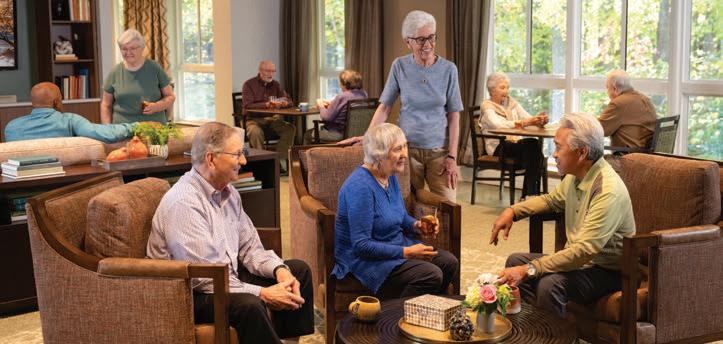


By Maureen Salamon
Part of the excitement of the holidays is eating our favorite foods, many of which feature spices we rarely encounter during the rest of the year.
But when you reach for spices to add to festive meals and baked treats, you’re doing more than waking up neglected taste buds. You’re also grabbing ingredients with the potential to boost your mood and health.
While not every spice has undergone rigorous scientific testing, many have proven anti-inflammatory effects. That means they inhibit inflammation that can cause or worsen a variety of chronic diseases, said Eric Rimm, a professor of epidemiology and nutrition at the Harvard
T.H. Chan School of Public Health.
Most people don’t think about how their mind and body might benefit from spice use. Those of us who incorporate more of them around the holidays typically do so because it calls to mind cozy, special days with our families.
“It’s what people remember from childhood and makes them feel warm and happy, so it’s tied back to family tradition,” Rimm said.
These beloved holiday spices can add zing to both your food and your health:
Cinnamon : One of the best-studied spices, cinnamon is a natural in holiday dishes. Much research has focused on cinnamon’s ability to help regulate blood sugar, and scientists believe it helps cells
use glucose more effectively, which is especially important for people with diabetes.
Cloves : Fundamental to gingerbread and fruitcake, cloves are also a common component of pumpkin pie as well as mulled wine and cider. High in antioxidants — which can lower the risk of chronic diseases — cloves contain vitamins and minerals. Research also suggests cloves offer antimicrobial effects, meaning they help hinder the growth of bacteria.
Ginger: In addition to cookies, ginger can also add punch to stuffing and complement root vegetables such as carrots, parsnips and sweet potatoes. It’s well known for its digestive benefits, relieving nausea as well as gas and bloating.
Turmeric: With its earthy, slightly peppery taste, turmeric adds color and pizzazz to Thanksgiving turkey as well as roasted carrots or cauliflower. Some Hanukkah dishes, such as latkes, contain turmeric as well.
Another well-researched spice, turmeric is rich in phytonutrients that may protect the body by neutralizing so-called free radicals, thereby shielding cells from damage. Studies have linked consuming turmeric to less arthritis pain and improvements in mood and depression symptoms.

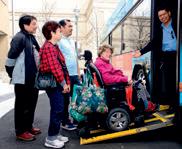
To maximize the health benefits of spices, however, you need to use more than a dash here and there, Rimm noted. The higher the “dose,” the greater the benefits. But while adding more spices to your cooking can be good for your health, that doesn’t mean spice supplements offer the same benefits
— or that they’re safe for everyone.
“Many people add cinnamon to foods because of its potential anti-inflammatory effects,” he said. “If you add a teaspoon or two of cinnamon to your breakfast every day, for instance, you can reap the benefits. It’s almost like you’re taking a pill, doing it therapeutically.”
If you’ve been relegating spices to just the holiday season, you’re missing out. Rimm suggests these ways to challenge your palate to keep a wider variety of spices in play all year long:
Experiment. Randomly pick a recipe featuring new-to-you spices and whip it up.
“Some people say, ‘Let’s cook foods from a different culture,’ and suddenly they’re getting into all different types of spices,” Rimm said.
Go back in time. Perhaps your grandparents or other ancestors loved a spiceheavy dish you’re not acquainted with. It can be edifying — both culinarily and personally — to bring it to your own table.
Test it in a restaurant. Consider it a low-stakes investment in your taste buds to explore new spices while eating out. Alternatively, buy a ready-made meal at the supermarket that features spices you’re not normally drawn to. If you enjoy it, “then you can find ways to incorporate those spices into your own cooking,” Rimm said.
Maureen Salamon is executive editor of Harvard Women’s Health Watch. © 2025 Harvard University. Distributed by Tribune Content Agency, LLC.

























By Carrie Dennett, MPH, RDN
There’s a certain logic to the idea that eating high-fat foods — even nutritious foods such as avocados, nuts and olive oil — can lead to weight gain. After all, one gram of fat contains nine calories, while one gram of protein or carbohydrate contains only four calories.
But just as science has debunked the idea that weight loss or weight gain is simply the result of “calories in, calories out,” the idea that eating fat automatically leads to eating excess calories, or that dietary fat is directly converted to body fat, has been shown to be not entirely correct.
The low-fat diet trend of the 1970s to 1990s was largely based on concerns about saturated fats and health. The weight loss industry — including many diet book authors — jumped on that bandwagon, promoting the idea that if you eat as little calo-
From page 8
for breathing more efficiently throughout the day. Also, be sure to discuss breathing positions, energy conservation and relaxation techniques you can use when you’re short of breath.
rie-dense fat as possible, you can eat a larger volume of food and still lose weight.
But instead of replacing saturated fat with healthy poly- and monounsaturated fats or more vegetables, fruits and whole grains, many people started eating more ultra-processed fat-free cookies, crackers and ice cream high in added sugar and refined carbohydrates.
The low-fat tide started to turn in the early 2000s, and more recently it’s become quite clear that dietary fat is compatible with at least short-term weight loss. Take the ketogenic diet — which is high in fat, very low in carbohydrates and moderate in protein.
However, it’s not necessary to switch from one extreme (low fat) to another (high fat). Studies that have compared diets with varying ratios of fat and carbohydrates found that, on average, no single ratio is superior for weight loss or for health. This may be because some people respond better to a higher fat diet, and oth-
See your healthcare team regularly. Stick to your appointment schedule, even if you’re feeling fine.
Be sure to get your annual flu shot and Covid-19 vaccine to help prevent infections that can worsen your COPD, and ask your healthcare team when you need the pneumococcal vaccine.
ers to a lower fat diet.
The right kind of fat matters
Fat is an essential nutrient that, among other things, helps us absorb “fat soluble” vitamins A, D, E and K from food. It’s also clear that including healthy fats in a meal can help you feel full sooner and keep you satisfied longer. “Healthy fat” is the key.
A 2018 Harvard study that looked at more than 20 years of data from almost 300,000 participants in the Nurses Health Studies and the Health Professionals Follow-Up Study found that when people increased saturated and trans fats in their diets, they were more likely to gain weight.
But when they increased their levels of monounsaturated fats from plant foods and polyunsaturated fats from fish and plant foods, they weren’t likely to gain weight, and some even lost weight. It appears that polyunsaturated fats in particular promote insulin sensitivity, which helps
You also may want to consider joining a support group for people with COPD, and you may benefit from counseling or medication if you feel depressed or overwhelmed.
— Mais Abdou, M.D., Pulmonology, Mayo Clinic, La Crosse, Wisconsin Mayo Clinic Q & A is an educational resource and doesn’t replace regular medical
the body use carbohydrates for energy instead of storing them as fat.
Stock up on these foods
Healthy fats have a place in any diet. Foods rich in polyunsaturated fat include fatty or oily fish such as salmon, sardines, anchovies and herring; some nuts and seeds, including walnuts, flaxseeds and sunflower seeds; tofu and soybeans; and vegetable oils such as canola, corn, soybean and sunflower. Foods rich in monounsaturated fats include avocados; peanuts and peanut butter; some nuts and seeds, including almonds, hazelnuts, pecans, pumpkin seeds and sesame seeds; and vegetable oils such as olive, canola, peanut, safflower and sesame.
Reprinted with permission from Environmental Nutrition, a monthly publication of Belvoir Media Group, LLC. 800829-5384, EnvironmentalNutrition.com. © 2025 Belvoir Media Group. Distributed by Tribune Content Agency, LLC.
care. This Mayo Clinic Q&A represents inquiries this healthcare expert has received from patients. For more information, visit mayoclinic.org.
© 2025 Mayo Foundation for Medical Education and Research. All Rights Reserved. Distributed by Tribune Content Agency, LLC.








By Matthew Kadey
The old axiom “you are what you eat” holds true. What we eat can play a huge role in the health of our bodies, including the brain, heart and skin. Certain foods can turn around tired-looking skin and even offer some natural protection from the sun.
“Skin health starts from the inside and is dependent on how well we nourish it through our dietary choices,” said Cindi Lockhart, a nutritionist and dietician.
Our skin takes a beating daily from environmental stressors, so it’s important to feed it what it needs. Here’s how to chew your way to a better complexion.
Eat the rainbow
Think of colorful veggies as an edible fountain of youth.
British researchers found that an increased intake of carotenoids, found in bright vegetables like sweet potatoes, tomatoes, leafy greens and bell peppers, over six weeks can have a beneficial impact on reducing reddening and other skin discoloration that impacts appearance. The beauty benefits were witnessed with just three servings a day of carotenoid-rich veggies and fruits.
“Carotenoids act as potent antioxidants, protecting our skin against environmental stressors including the sun’s UV rays,”

Lockhart said.
Case in point: The antioxidant betacarotene has been shown to offer some protection against sunburn (but you should still wear sunscreen).
Ditch the standard American diet
If you want to save face, go easy on fast food and other overly processed stuff. A 2020 study in the Journal of Investigative Dermatology discovered that a typical Western diet that is rich in fat and sugar may lead to inflammatory skin conditions such as psoriasis.
“The standard diet is very inflammatory and lacking in the phytonutrients, antioxidants and nutrients that protect our skin,” Lockhart said.
Here’s more proof to support a “beauty from the inside out” approach to skin health:
An investigation from the University of California, Davis suggests that a daily almond habit might improve measures of wrinkle width and severity. Postmenopausal women who consumed about two ounces daily for four months showed a 10% reduction in wrinkle size.
Almonds, along with sunflower seeds and hazelnuts, are rich in antioxidants like vitamin E.



















The Mediterranean diet isn’t just good for your heart; it may prevent skin cancer.
A report in the American Journal of Clinical Nutrition discovered that women who adhered most closely to the Mediterranean diet over 15 years benefited from a lower risk of skin cancer, particularly melanoma and basal cell carcinomas.
This eating style, which emphasizes vegetables, fruits, olive oil and whole grains can provide a potpourri of nutrients, anti-inflammatory omega-3 fats and phytonutrients that may help shield you from skin cancer.
For instance, greater intakes of the Med-favorite tomato, which is rich in the potent antioxidant lycopene, have been shown to confer protection from UV-induced skin cancer tumors.
If you like to regularly venture into the great outdoors, popping a few grapes could help you keep premature skin aging at bay via some sunburn-protective effects.
According to a study by scientists in Spain, the flavonoids found in grapes, especially darker varieties, can act as natural photoprotection by lessening UV-ray-activated reactive oxygen species from forming and causing skin cell death.
Don’t be fresh obsessed
It looks like there might be a gut-skin axis. Preliminary research suggests that exposure to higher amounts of the probiotic Lactobacillus rhamnosus can impact the expression of certain genes in the skin involved in adult acne.
Other science published in the journal Nutrition Research found that higher intakes of fermented foods may reduce the risk of developing eczema. (Of note, eating
more meat and processed foods caused higher rates of eczema.)
“The gut and skin are innervated organs, and each affects the other, it looks,” she said. Research is still in its infancy, but Lockhart says you can try to combat pimples and red, itchy skin (and also keep your digestive health in tip-top-shape) by eating more fermented foods like kimchi, kefir, miso and sauerkraut.
Better known as a great source of heartbenefiting omega-3 fats, salmon also serves up an important compound to help stamp out photoaging.
Data presented in the journal PLOS One suggest that astaxanthin, an antioxidant pigment found in pinkish fish like salmon and arctic char, can accumulate in the skin, where it protects against the harmful effects of UV exposure including the skin water loss that contributes to wrinkles.
One study found that increasing the amount of soy-derived isoflavones in the diets of postmenopausal women improved skin thickness and boosted concentrations of collagen and elastic fibers for a more youthful appearance. Find isoflavones in tofu, tempeh and edamame.
As a bonus, the amino acids in soybased foods can supply our bodies with the essential building blocks to support collagen production, the protein responsible for helping promote skin firmness.
Reprinted with permission from Environmental Nutrition, a monthly publication of Belvoir Media Group, LLC, 1-800829-5384, EnvironmentalNutrition.com. © Belvoir Media Group. Distributed by Tribune Content Agency LLC.




































































































































v & Chhe C Ch ff r e i G i L e s t omfor t eeer e ofom











Brook A & Bro o s c e offer e o e Gr k a g a i in v sist s ed Li




















d en en al e h o t d i

ed er mon int old w he c w t hrou e t eiv ld t y ac c and socia y emain ph iall o r s ndsdssoci s t s sid esidentr t enc ha le t y est id siden ant li ant lif ibr g v e home alon l eellik t f tha q k abo a s nd on n r de if
i d d. hs n nt h ughout y sic ges coura h a it w all w e a 0 h ouur t 0 ant 0 t i a





















































































































By Regis Fernandes, M.D.
Dear Mayo Clinic: I am overweight, and I just learned my cholesterol is high. I know diet and exercise are important. Do I need medication?
A: Cholesterol is a type of fat in our blood. Our bodies need a small amount of cholesterol to build the structure of cell membranes, make certain hormones and help with metabolism, such as producing vitamin D. The catch: We don’t need too much cholesterol.
Atherosclerosis, also known as narrowing of the arteries, happens when cholesterol builds up and blocks blood flow. This buildup is called plaque, which can clog arteries and can burst, leading to a blood clot.
Atherosclerosis can cause heart problems such as chest pain (angina) or heart attack. It also can lead to problems in the brain, including transient ischemic attack, stroke, peripheral artery disease in the legs or arms and even kidney failure.
Cholesterol and triglycerides are types of lipids. They travel in our blood by attaching to proteins. Adults 20 and older should ask their healthcare team about their lipid profile and how to interpret the numbers.
Low-density lipoprotein (LDL)
cholesterol: We call LDL “bad” cholesterol. Below 100 milligrams per deciliter (mg/dl) is optimal for healthy people in the absence of coronary artery disease. If you have heart disease, your LDL should be below 70 mg/dl. Treatment decisions to reach appropriate levels need to be based on personal risk factors.
High-density lipoprotein (HDL) cholesterol: We call HDL “good” cholesterol. It absorbs cholesterol in the blood and brings it to the liver, which flushes it from the body. For females, it should be above 50 mg/dl. For males, it should be above 40 mg/dl.
Triglycerides: Triglycerides are a type of fat we use for energy. If you have too high of a triglycerides level, it can cause heart disease. Less than 150 mg/dl is optimal.
Total cholesterol: This is the sum of LDL and HDL cholesterol plus 20% of triglyceride levels. A total cholesterol level below 200 mg/dl is desirable.
Some people who are overweight may get heart disease not because their LDL is high, but rather because their HDL is low and their triglycerides are high.
That relationship can cause heart disease as much or even more than just high LDL cholesterol. These lipid abnormalities are significant for people who are over-
weight. Their triglyceride levels increase, and their HDL lowers. They’re becoming prediabetic. Their LDL is staying the same, but they’re still heading to heart disease.
Treating high cholesterol depends on individual risk. The higher the risk — for example, with someone who already had a heart attack — a higher percent of reduction is needed.
Medication to lower cholesterol can reduce LDL by about 60% to 65%. Lifestyle changes can reduce LDL by 10% to 15%.
The body’s ability to handle cholesterol is genetically determined. Some families simply have a genetic mutation that prevents the body from clearing cholesterol. People with the condition are more likely to require medication to reduce their cholesterol levels.
Beyond medication, these lifestyle changes help manage lipids:
• Limit meat and dairy intake; they have saturated fat, which raises LDL cholesterol.
• Consume more fish, soluble fiber, fruit and vegetables. Try oats, barley, beans, nuts, eggplant, okra, apples, grapes, strawberries and citrus fruits.
• Control your weight. It lowers your triglycerides and improves your HDL levels.
• Exercise about 150 minutes of aerobic activity a week at a moderate intensity. Moderate intensity means you must breathe through your mouth. If you’re breathing through your nose, that is low intensity.
Exercise prevents cholesterol from building up, but it doesn’t change LDL concentration levels. You must burn about 2,000 calories a week to lower LDL concentration. However, exercise helps lower triglyceride levels and maintain weight loss.
• Do strength training at least twice a week. It helps your cardiovascular and muscular systems. Not everything we do to prevent heart disease is about cholesterol.
The National Heart, Lung and Blood Institute recommends that for men 45 to 65 and women 55 to 65, cholesterol screenings should occur every one to two years. Over 65? Test annually. More frequent testing may be needed for people who have or are at risk for coronary artery disease.



















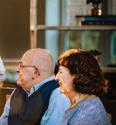
• Avoid diets high in carbohydrates , particularly refined carbs like sugar and white flour. They raise the blood sugar level quickly, raising triglycerides. Reducing simple refined carbohydrates helps lower triglycerides and weight because you store less fat.
Mayo Clinic Q & A is an educational resource and doesn’t replace regular medical care. This Mayo Clinic Q&A represents inquiries this healthcare expert has received from patients. For more information, visit mayoclinic.org.
© 2025 Mayo Foundation for Medical Education and Research. All Rights Reserved. Distributed by Tribune Content Agency, LLC.






























































































































































By Diane Rossen Worthington
My friend Connie Engel is an amazing artist but also quite a creative cook. She shared with me her inspired combination of crispy sweet Fuyu persimmons with velvety orange winter squash in this pictureperfect holiday soup. I tried this soup and fell in love with the beautiful, complementary flavor combination and spectacular color.
I like to use Meyer lemons that are a little sweeter and less acidic in the cream and, of course, a fresh sprinkling of nutmeg. Serve the soup in shallow bowls topped with lemon nutmeg cream and parsley. I also like to serve small mugs or espresso cups of this during the holidays when company arrives.
If you don’t want to have persimmons, use 1 ½ pounds peeled and cubed winter squash instead.
For a spicier flavor, add smoked chili powder and lime juice instead of lemon juice to the cream; omit the nutmeg.
Serves 4 to 6
Ingredients:
For the purée:
2 tablespoons olive oil
2 leeks, light green and white part only,
cleaned and finely chopped
1 pound peeled and diced butternut squash
4 Fuyu persimmons, peeled and cut into 2-inch cubes
2 garlic cloves, minced
5 cups chicken or vegetable broth
1 tablespoon thyme leaves, chopped
Salt and freshly ground black pepper
For the lemon nutmeg cream:
¼ cup sour cream or crème fraîche
Zest of 1 lemon
1 teaspoon lemon juice
Freshly grated nutmeg, to taste
2 tablespoons chopped parsley, for garnish
Directions:
1. Heat the oil in a large saucepan over medium-high heat. Add leeks and sauté for 5 minutes or until softened. Add the squash and persimmons, and cook for 3 more minutes or until nicely coated. Add garlic and cook for another minute. Add the stock, salt and pepper, and mix together. Bring to a boil and then reduce the heat to medium low, cover and simmer for 20 to 25 minutes or until the squash and persimmons are tender.
2. Meanwhile, make the lemon nutmeg cream: Combine the cream, zest and lemon juice in a small bowl and mix to combine. Grate in the nutmeg to taste and






stir to blend. Set aside.
3. Purée the soup in the pan with a hand blender or in a blender or food processor fitted with the metal blade. Return the soup to the pot if necessary. Taste for seasoning.
4. To serve, ladle the soup into heated bowls, swirl in a tablespoon of lemon nutmeg cream and garnish with parsley. Advance preparation: The soup may be prepared up to three days in advance, covered and refrigerated. Reheat gently.
This soup also freezes well. Adjust the seasonings when you reheat the frozen soup. Make the lemon cream just before serving.
Diane Rossen Worthington the author of 18 cookbooks, including Seriously Simple Parties, and a James Beard Awardwinning radio show host. You can contact her at seriouslysimple.com.
© 2025 Diane Rossen Worthington. Distributed by Tribune Content Agency, LLC.


• Eye Care for All Ages • Specialists in Cataracts, Glaucoma, Diabetic Retinopathy and Macular Degeneration • Contact Lens Specialists
• Plastic & Reconstructive Eye Surgery Full In-House Optical Department Outpatient No-Stitch Cataract Surgery • Laser Surgery
MEDICARE ASSIGNMENT ACCEPTED
LENARD H. HAMMER, M.D., F.A.C.S.
GORDON LUI, M.D.
SCOTT B. BECKER, M.D.
YIYUN ZHOU, M.D.





















In our fast-paced world, medications help us manage chronic conditions, ease pain and stay functional.
But there’s something most people don’t realize: Some of the very same medications that are helping you can also deplete vital nutrients, slowly and silently. I call these “drug muggers,” and I wrote a whole book about them because this side effect is wildly under-recognized.

When nutrient levels fall, your symptoms might creep back even while your lab work looks “normal.” Worse, those symptoms can look like new diseases, and suddenly you’re
prescribed more medications. It becomes a frustrating cycle of prescriptions, side effects and new diagnoses.
A “drug mugger” is any medication that robs your body of nutrients. It might block absorption, increase nutrient loss, or interfere with how your body uses or stores vitamins and minerals.
By Suzy Cohen
This doesn’t mean you should stop your meds. Many are life-saving. But it does mean we need to be more proactive, supporting your body with the nutrients it’s losing along the way.
A lot of medications are drug muggers,
including acid blockers, antibiotics, oral contraceptives, statins and blood pressure meds. For example, a cholesterol drug called cholestyramine binds fat-soluble vitamins A, D, E and K in your intestines, which makes them harder to absorb. Medications that include furosemide (Lasix) will cause you to urinate more. That’s good for fluid retention or blood pressure, but they also wash out magnesium, potassium, calcium and sodium. That’s why people on these drugs often deal with leg cramps, insomnia or even rising blood pressure again. These symptoms are not always a new disease; it could be nutrient depletion.
Then there are drugs like metformin, widely used for type 2 diabetes. Metformin interferes with your ability to absorb vitamin B12.
Because the process of nutrient depletion is gradual, you may not realize what’s happening until you’re already dealing with symptoms like fatigue, brain fog, leg cramps, anxiety or brittle nails. These look like new issues, but they’re often your body’s way of whispering, “Help me!”
So what can you do? First, identify your drug muggers. I’ve made it easy for you with a new tool at DrugMuggers.com









where you can input your medications and see what nutrients they may be depleting. Then, support your body. That could mean eating more leafy greens, nuts and seeds or taking targeted dietary supplements.
My Drug Muggers app is updated to 2025, so it has all the new medications, plus it lists foods rich in the exact nutrients your medications may be robbing.
Don’t forget to talk to your doctor. Bring a list of your medications and symptoms to your next visit and ask about checking levels of nutrients.
Finally, monitor over time. Nutrient levels don’t crash overnight and they don’t bounce back overnight either.
I know as a pharmacist that medications can be helpful, even life-saving. But when they slowly drain your nutrient reserves, the fix might be simpler than you think. To search your medication, visit drugmuggers.com.
Read the expanded version of this column at suzycohen.com.
This information is opinion only. It is not intended to treat, cure or diagnose your condition. Consult with your doctor before using any new drug or supplement.
Suzy Cohen is a registered pharmacist and author of The 24-Hour Pharmacist and Real Solutions from Head to Toe
From page 1
researchers on the disease and continued that research at UMD’s Department of Cell Biology and Molecular Genetics, where she would discover the effects of methylene blue.
Invented in 1876 by a German chemist, methylene blue is a type of salt that can pass through both fats and water.
“If it gets into your skin, it’s very soluble — it can go through lipid, it can go through water — so it gets all the way to the cells, to the mitochondria inside your cells, and it comes in and acts as a natural antioxidant,” Cao said.
Over the years, doctors have used methylene blue to treat malaria, cancer, septic shock and other diseases. A handful of studies suggest it may even treat Alzheimer’s disease.
“We believe methylene blue is a magic molecule, and anti-aging is only one of its functions,” Cao said.
More commonly, though, surgeons and lab technicians use it as a dye.
That’s how Cao’s lab discovered “quite by accident,” she said, that methylene blue had anti-aging properties. After an undergraduate student cross-contaminated the skin samples, he noticed that the cells had improved.
“It helped the progeria, and it helped the healthy control samples as well,” Cao said, noting that the healthy skin cells were
from people of all ages.
By the end of 2017, Cao began making prototypes of facial cream, experimenting with different scents like lavender and rose and giving them to friends as holiday gifts.
“My lab was smelling very good during that time,” she said.
Many of the recipients asked for more — an early sign of success.
Just before Mblue Labs’ official launch, TV star Kevin Harrington of ABC’s Shark Tank endorsed the woman-owned company. Since then, it has sold its Bluelene products on Amazon and through its website, bluelene.com, growing by 40% to 80% year over year.
“We have a really good product that works, and so we are able to retain our customers at a rate of 65.2%, which is tremendous in the industry. So, customers stay with us because our product works,” El Kordi said. “There’s no wild marketing. We really deliver what we promise.”
As Mblue Labs enters its eighth year, the woman- and immigrant-owned company based in Bethesda is making significant ripples in the marketplace. Last year, the U.S. Chamber of Commerce included it on its list of the top 100 small businesses in America.
One of the secrets of its success has been the University of Maryland’s well-appointed lab. Cao’s research is funded in part by Mary-
land Industrial Partnerships. Mblue Labs was able to launch with just $150,000 from TEDCO, Maryland Technology Development Corporation.
“We’re very fortunate to be a University of Maryland portfolio company — and they do own a small part of the company,” El Kordi said. “Part of it is having the lab. We have our own scientists in the lab doing the work, but you can imagine how expensive it would be to build such a lab on our own.”
In the meantime, the University of Maryland secured a U.S. patent on the topical use of methylene blue, which it shares with Mblue Labs. Unfortunately that patent hasn’t given the company sole control over the common ingredient. If you search Amazon for methylene blue, for instance, you’ll find all kinds of oils and creams containing it, not just Bluelene products.
“It’s really the Wild West, so companies will go and use our ingredient; they really don’t care that there is a patent,” El Kordi said.
Other “nefarious actors,” as she calls them, simply add more methylene blue to their products, regardless of the potential side effects (a smurf-like blue tint to skin).
“They’ve formulated outside our patent range, which means they’re giving you more methylene blue than is really good for you,” El Kordi said. However, going to court can cost tens
of millions of dollars. With little protection for her discovery, Cao has accepted the competition as a form of validation of her work.
“As a scientific researcher, I have to say, it’s rewarding to see people find that, oh, methylene blue really is useful,” she said. “When we first talked about it back in 2018, everybody was like, ‘What’s methylene blue?’”
Meanwhile, Cao continues her research on progeria. Her most recent findings, published last year in the Aging Cell journal, may help patients live longer.
“It’s a lot of hard work,” Cao admitted, but that work has benefitted others. “My research is doing well. The company is doing well. I feel very happy and satisfied.” With 11 products on the market and several others in the pipeline, the two women have formed a bond that makes their company stronger.
When they met in 2018, Cao said, “I feel like we clicked. Nowadays, she said, “Sometimes I end up talking to Jasmin more than I talk to my husband. We talk a lot, just as mothers.”
Cao and El Kordi, who each have two grown sons, may have fewer wrinkles than most working mothers. Both of them, of course, use Bluelene products every day. For more information, visit bluelene.com or call (800) 988-8068.



















Dear Seniors,
By Charon P.W. Hines
Happy Holidays! As we welcome the month of December, I am reminded of how meaningful this season can be for so many families and District residents. The holidays often bring excitement, anticipation, and moments of joy with family, friends, and loved ones. However, we know this season can feel difficult for some, especially when colder weather makes it harder to stay connected. If you find yourself feeling lonely or overwhelmed, please remember that you are not alone. Our team at DACL is here for you. Our senior wellness centers and programs are warm and inviting places where community and companionship are always present, ensuring that you are living boldly at every stage in life.
This month, we are especially excited to celebrate one of our most cherished traditions, Mayor Muriel Bowser’s 27th Annual Senior Holiday Celebration! This joyful gathering brings seniors from across the District together for a day filled with festive cheer, entertainment, and community. This year, we are thrilled to host the celebration at a new venue, the Southeast Tennis and Learning Center, located at 701 Mississippi Avenue SE. The festivities begin at 10:00 a.m. on Wednesday, December 17, 2025, and we truly hope to see you there. To reserve your spot, please visit tinyurl.com/holidaycelebration27 to RSVP.
If you are looking for even more festive activities this season, I encourage you to visit the Downtown DC Holiday Market, a beloved annual tradition for residents across the city. With more than 100 local vendors, the market offers a wonderful place to shop, enjoy great food, pick up a gift,
and fellowship with others. The Holiday Market is open November 21 to December 23:
• Monday–Thursday from 12:00 p.m.–8:00 p.m.
• Friday–Saturday from 11:00 a.m.–9:00 p.m.
• Sunday from 11 a.m.–8 p.m.
The market is located on F Street between 7th and 9th Streets NW, right next to the Gallery Place–Chinatown Metro. Best of all, admission is free. As the temperatures continue to drop, I also want to remind everyone to stay safe and warm. Seniors can be more susceptible to cold-related illnesses like hypothermia. Dressing in layers, keeping your home warm, and limiting time outdoors on especially cold days can make a big difference. If you or someone near you shows signs of hypothermia, such as shivering, confusion, drowsiness, or slow or slurred speech, please call 911 immediately. For additional tips on preparing for winter weather, visit ready.dc.gov for helpful information and resources.
As we approach the end of 2025, I find myself reflecting on the resilience, strength, and unity of our senior community. This year, we have grown together, supported one another, and continued building a city where older adults are valued and cared for. As we move into 2026, DACL remains committed to standing beside you, championing your needs, and creating opportunities for connection, wellness, and joy in the year ahead. Wishing you a warm, bright, and joyful holiday season.
In Service, Charon P.W. Hines Director, Department of Aging and Community Living
This November marked the 26th year of Safeway’s Annual Feast of Sharing holiday celebration. A jovial crowd of DC residents gathered for a Thanksgiving meal, live entertainment, free health screenings and a winter coat giveaway.
“This holiday season we have a lot to be thankful for,” said Mayor Muriel Bowser, who attended the event. “I’m grateful that we live in a community that takes care of our seniors [and believes] that you should be able to age in place in Washington, DC — to not just get older, but to thrive



District seniors enjoyed a night at the Cabaret at the second annual Events DC “Legends Ball.” Seniors enjoyed the golden era of glamor and music.






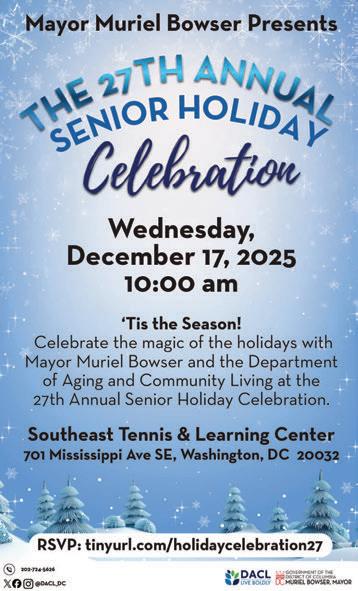


Watch out for scammers who pose as Pepco workers. See story on page 23.
By Emily Glassman
The end of the year is a time to reflect on the past and make positive changes. It’s also a time when we think about giving back to the causes we care most about.
But amid the holiday season’s crunch, many donors fail to make a thoughtful plan for their philanthropy. They may see a cause their friends and family are supporting and quickly open their wallets. Although any act of generosity is commendable, donors can make the impact of their charitable giving go further by being strategic in their approach.
If you’re considering giving back this holiday season, here are several tips to help you maximize your gift’s impact and ensure that you’re taking every advantage available to you.
Align giving with your core values
It might seem tempting to give to the latest cause du jour, but ask yourself: Does the organization you’re giving to comport with your core values? Sometimes organizations most visible during high-profile
tragedies have a broader mission at odds with your deeply held beliefs.
In the United States, there are 1.97 million nonprofit organizations. With so many options, donors must do their due diligence to ensure they give to highly reputable organizations that effectively serve their causes, not enrich their leadership. Check resources like Charity Navigator, which rates organizations on a scale of one to four across various metrics, such as finance and leadership. You can also use it to connect you to the best charities aligned with your core values.
Consider making a recurring donation
Charities can better use your dollars when they know they have a recurring source of revenue. Consider making a monthly or multi-year donation, which is important for nonprofits looking to fund capital campaigns or other significant endeavors.
We all know it’s better to give than receive, but who wouldn’t want the bonus of writing off some of your tax liability? For 2025, the maximum cash contribution you can deduct is 60% of your gross adjusted income (AGI) and 30% of AGI for appreciated non-cash assets, for taxpayers who itemize deductions on Schedule A.
High earners can consider additional strategies, such as creating a charitable remainder unitrust or charitable remainder annuity trust, either of which allows an individual to receive a tax deduction now for future donations of assets contributed to a charity via an irrevocable trust while also generating income for their own use.
Or they may start a donor-advised fund (DAF), allowing a tax filer to write off donations into the DAF while doling out grants at their convenience later on, which might enable a larger deduction in one tax year.
Though every charity requires funding, donating your time can help strengthen
your commitment to a cause. Do you have a skill that might be of use to the organization?
I’ve known many people, who after starting as a regular volunteer, began to become more involved in the organization, rising to the level of a board member — roles that have had a profoundly positive impact on their lives.
Philanthropy is personal. Everyone has a different reason for giving to a particular charity.
Sometimes, they give to a nonprofit focused on issues that have impacted their lives or those of their loved ones. Other times, though, they may not have a personal connection; they see a problem in their community and are inspired to make a difference.
With some planning and foresight, you can make the holiday season more cheerful for the causes nearest and dearest to your heart.
© 2025 The Kiplinger Washington Editors, Inc. Distributed by Tribune Content Agency, LLC.
Q. I am 64 and recently widowed. I plan on working until age 70 before I apply for a Social Security benefit. I currently earn $150,000 per year. Are there any disadvantages in applying for a survivor benefit now? I understand that applying for a survivor benefit now will not prevent me from applying for my work benefit at age 70. Is that correct?

age (FRA), your survivor benefit will be reduced because of the level of your current income.
return, 85% of Social Security income over $25,000 is taxable.
I intend to apply for Medicare when I reach 65. I also intend to periodically make withdrawals from my IRA. How will these factors affect my tax situation?
By Elliot Raphaelson
A. It is correct that you can initiate a survivor benefit now and at 70 apply for a larger benefit based on your work record.
Although you can file for a survivor benefit now, there is a disadvantage. Because you have not reached your full retirement
Under current regulations, in 2025, any income that you report above $23,400 will result in a reduction of any Social Security benefit of $1 for every $2 of income above $23,400. If you report $150,000 in income, that would exceed the $23,400 limit by $126,600. So, $63,300 would be withheld from Social Security. You would receive no survivor benefit.
After you reach FRA, there will be no penalty associated with income above $23,400. So you should consider waiting until you reach your FRA before you apply for a survivor benefit.
Regarding IRA withdrawals, although there are no penalties associated with those withdrawals from traditional IRA accounts, that income will result in higher Social Security taxes. For an individual tax
When you reach 65 and apply for Medicare, you have to be aware of the potential increase in premiums for Part B (medical expenses) and Part D (prescription drug expenses). There is a two year look-back calculation associated with income-related monthly adjustment amount.
For example, if you plan on enrolling in Medicare in 2026, the IRS will consider your modified adjusted gross income (MAGI) from 2024. If your MAGI exceeds specified limits in 2026, you would be subject to surcharges associated with your premiums for Part B and Part D.
So, when it comes to tax planning for future years, it is important for you to know the implications associated with the income you expect to report after you enroll in Medicare. You should understand the options you have associated with reporting income that will result in higher premiums for Part B and Part D of Medicare.
If you have choices regarding withdrawal of taxable income from sources such as
IRAs, you should make your choices based on whether you would be subject to surcharges. For example, if you know that your income in a specific year is lower than average, that might be a good year to make IRA or 401(k) withdrawals.
You should be aware of the restrictions associated with the new senior deduction of up to $6,000/individual. If your income (individual return) exceeds $175,000 ($250,000 for joint returns), you lose some or all of this deduction. So, if your expected income approaches these limits, you should limit your IRA or 401(k) withdrawals if you can do so.
A great deal of this response was provided by Heather Schreiber, an expert in Social Security who contributed recently to Ed Slott’s monthly newsletter. If you would like professional consulting regarding Social Security issues, she can be contacted at heather@hlsretirementconsulting.com. Elliot Raphaelson welcomes your questions and comments at raphelliot@gmail.com. © 2025 Elliot Raphaelson. Distributed by Tribune Content Agency, LLC.
By Maurie Backman
Q: I want to help pay for my grandkids’ college. Should I make a large lump-sum 529 plan contribution or spread the funds out evenly over the years?
A: A lot of people experience sticker shock when they sit down to look at college costs today. For the 2025-2026 academic year, U.S. News & World Report puts the average cost of tuition and fees at a four-year, public in-state school at $11,371 per year.
For a public out-of-state school, the average price tag is $25,415, and for private universities, it’s $44,961. Columbia University is at the top of the list of pricey schools, charging $96,000 per year.
Meanwhile, an estimated 425 million people today owe federal student loan debt, according to the Education Data Initiative, which also said the average public university student borrows $31,960 to get a bachelor’s degree.
Owing all that money can take a toll. A late 2023 Bankrate survey found that 59% of student loan borrowers felt forced to delay key financial milestones because of their student debt, including building emergency and retirement savings.
If you’re in a strong enough financial position to help pay for your grandchildren’s education, you might be eager to ease that burden — both for them and your grown children, who might also be struggling to set aside money for college savings.
If so, a 529 plan is a good place to start. These plans offer the benefit of tax-free gains and withdrawals, provided the money is used to cover qualifying educational expenses.
You might wonder if it’s better to make a large lump-sum contribution to a 529 plan now or spread those funds out evenly over the years. You could go either way. It’s im-
portant to understand the pros and cons of both options.
If you can afford to fund a 529 plan with a lot of money up front, it could pay to do so, said Jonathan Sparling, director at CollegeWell.
“Contributions to 529 plans are excluded from an individual’s taxable estate, even though the account owner retains control of those funds,” he said.
“529 plans are eligible for the superfunding provision, which allows individuals to front-load five years of contributions in one tax year. A married couple could contribute as much as $190,000 per beneficiary, thereby reducing their taxable estate by that amount of money.”
There’s also the benefit of time to consider from an investing standpoint.
“Contributions made to 529 plans when a child is very young have more time to accumulate growth and weather market fluctuations. The same is true for 529 prepaid plans, like ones provided by certain states and the Private College 529 Plan,” he said.
With the Private College 529 Plan, Sparling explained, contributions lock in a percentage of tuition and fees at nearly 300 member colleges across the country.
“Making a lump-sum contribution earlier on locks in more years of tuition at a lower rate, protecting against future tuition inflation,” he said.
If you can afford to front-load 529 plan contributions, not only does it give your money that much more time to grow, it’s also an expense you won’t have to think about year after year.
However, Brian Schmehil, CFP and



managing director of Wealth Management at The Mather Group, points out that while you’re generally better off investing a lump sum of money, this approach increases your market-timing risk compared with dollar-cost averaging year after year.
Schmehil also points out that it’s important to consider the tax benefits your state might offer.
“Many states limit the amount you can deduct from your income each year,” he said. “Spreading out your contributions can provide a guaranteed tax benefit to you and your family. In some cases, the value of this guaranteed tax benefit may outweigh the uncertainty of market returns.”
Schmehil also said that making contributions on a yearly basis gives you more
flexibility if your circumstances, or those of your beneficiaries, change.
For example, your healthcare costs may increase dramatically. Or your grandchildren might decide they don’t want to attend college.
Even though 529 plans give you some flexibility to switch beneficiaries, ultimately, you’ll get even more flexibility by having your money outside one of these accounts.
There’s really no right or wrong approach.
“Regardless of when contributions are made,” Sparling said, “every dollar saved for college can help offset future costs and increase college options for their grandchildren.”
Distributed by TCA, LLC.

Dear Savvy Senior,
Can you recommend some good online resources for writing a simple will? I’m 70 and divorced and want to get my affairs organized, but I hate paying a high-priced attorney fee if I can do it myself.
Don’t Have Much Dear Don’t, A last will and testament is an important document to have because it ensures that your money and property will be distributed to the people you want to receive it after your death. Yet fewer than one-third of American adults have a will.

If you die without a will, your estate will be settled in accordance with state law. Details vary by state, but assets typically are distributed using a hierarchy of survivors. Assets go first to a spouse, then to children, then your siblings and so on.
Be aware that certain accounts take precedence over a will. If you jointly own a home or a bank account, for example, the house, and the funds in the account, will go to the joint holder, even if your will directs otherwise.
Similarly, retirement accounts and life insurance policies are distributed to the


beneficiaries you designate, so it is important to keep them up to date too.
If you have a simple, straightforward estate and an uncomplicated family situation, writing your own will — with the help of a good online will making program — is a viable, cheaper alternative to hiring an attorney. Like tax software, these online tools will guide you through a series of questions and will insert your answers into a will for you, and it usually takes less than 30 minutes from start to finish.
Some of the highest-rated do-it-yourself options include the Quicken WillMaker & Trust 2025 downloadable software (WillMaker.com) that starts at $109; Trust & Will (TrustandWill.com), which charges $199 for an individual will-based estate plan; and LegalZoom (LegalZoom.com), which offers will-based estate plans for $129 or $149 if you’d like assistance from an independent attorney.
If that’s more than you’re able or willing to pay, two good options that will let you make your will for free are FreeWill.com or DoYourOwnWill.com.
If you have considerable financial assets or a complex family situation, like a blend-





















































































ed family or a child with special needs, it would be smart for you to seek professional advice. An experienced lawyer can make sure you cover all your bases, which can help avoid family confusion and squabbles after you’re gone.
Costs will vary depending on your location and the complexity of your situation, but you can expect to pay somewhere between $200 and $1,000 to get your will made. To help you save, shop around and get price quotes from several different firms. And before you meet with an attorney, make a detailed list of your assets and accounts to help make your visit more efficient.
Once your will is written, the best place to keep it is either in a fireproof safe or file cabinet at home, in a safe deposit box in your bank or online. But make sure your executor knows where it is and has access to it.
Or, if a professional prepares your will, keep the original document at your lawyer’s office. Also, be sure to update your will if your family or financial circumstances change, or if you move to another state.
Send your questions or comments to questions@savvysenior.org, or to Savvy Senior, P.O. Box 5443, Norman, OK 73070.


























By Rod Wilson
Pepco, along with more than 100 energy companies across the U.S. and Canada, wants to remind customers to stay vigilant against energy-related scams designed to steal money and personal information.
While scams do occur throughout the year, fraudulent activity and scam attempts generally increase during the holiday season. Pepco encourages customers to be extra cautious this time of year as scams targeting utility customers have become increasingly sophisticated due to advancements in artificial intelligence (AI) and other technologies.
One of the most common tactics involves a scammer calling a customer and demanding an immediate payment via prepaid debit or credit card to avoid service disconnection.
These impostors often pose as utility company employees, instructing the customer to purchase a prepaid card from a nearby convenience store or pharmacy, then call back to complete the “payment.” This approach can feel surprisingly authentic, as scammers can manipulate caller IDs and even replicate utility companies’ official voice greetings and hold recordings.
As Utilities United Against Scams suggests, be suspicious: Ask the person on the phone or at your door to provide you with your account number, your last payment amount, date of payment, and his or her employee identification number. If they are a legitimate utility representative, this information will be readily accessible. If not, hang up or shut the door, and call your utility.
Tips to identify scams
Pepco will never:
• Ask for immediate payment with a prepaid cash card or cryptocurrency.
50+ VIRTUAL EMPLOYMENT EXPO
If you are a jobseeker over 50, JCA invites you to attend the virtual Employment Expo on Thu., Jan. 20 from 10 a.m. to 3 p.m. on Zoom. This is your opportunity to retool, recharge and reinvent. Register for free at virtualexpos.accessjca.org. For more information, call (301) 255-4209 or email employmentexpos@accessjca.org.
• Request your Pepco account number or personal information like a social security number, driver’s license number or bank statement.
• Visit homes or businesses to discuss service disconnection without prior contact.
• Lack a company ID. All field employees wear a uniform with the Pepco logo, including a shirt and safety vest. Employees also display a company ID badge with the Pepco logo and their name.
Generative AI also represents a growing threat and allows scammers to create highly realistic, human-like content. This technology makes scams appear more credible, which is why it’s crucial to stay cautious and always verify any unexpected or suspicious communication. Be on the lookout for:
• Deep fakes: Digitally manipulated images or videos that mimic real people (Hint: Choose a code word that only your
family knows.)
• Voice cloning: Impersonates individuals to carry out scams
• Phishing and malware: AI-written phishing emails, texts and malware
If a customer ever questions the legitimacy of a call or visit to their home, they should contact Pepco at (202) 833-7500.
Any customer who believes they have been a target of a scam is urged to contact their local police and call Pepco immediately to report the situation.
To learn more about preventing scams, visit Pepco.com/Scams or utilitiesunited.org.
Rod Wilson is senior communications specialist at Pepco, an Exelon company.
Learn about digital vaults, including what they are, how they differ from general cloud storage, and how they can help you protect important documents. This free class by Senior Planet Montgomery County takes place on
Thu., Dec. 18 from 1 to 2 p.m. at the Holiday Park Senior
Dr., Silver Spring, MD. Registration is not required.
The Greens at Hammonds Lane: 410-636-1141
Park View at Furnace Branch: 410-761-4150
Park View at Severna Park: 410-544-3411
Ednor Apartments I: 410-243-0180
Ednor Apartments II: 410-243-4301
The Greens at Irvington Mews: 227-240-8179
The Greens at Irvington Mews II: 240-209-4809
Park Heights Place: 410-578-3445
Park View at Ashland Terrace: 410-276-6440
Park View at Randallstown: 410-655-5673
Park View at Rosedale: 410-866-1886
Park View at Taylor: 410-663-0363
Park View at Towson: 410-828-7185
Park View at Woodlawn: 410-281-1120
Park View at Easton: 410-770-3070
Park View at Bel Air: 410-893-0064
Park View at Box Hill: 410-515-6115
AARP has a set of tools to prevent social isolation, which can be worse during the holidays. Search the directory for free or lowcost services in your area, including medical care, food, job training and more. For helpful articles and expert advice, visit connect2affect.org. BEACON BITS
Park View at Coldspring: 410-542-4400
Cove Point Apartments I: 410-288-2344
Cove Point Apartments II: 410-288-1660
Evergreen Senior Apartments: 410-780-4888
The Greens at English Consul: 410-789-3000
The Greens at Liberty Road: 410-655-1100
The Greens at Logan Field: 410-288-2000
The Greens at Rolling Road: 410-744-9988
Park View at Catonsville: 410-719-9464
Park View at Dundalk: 410-288-5483 • 55 & Better
Park View at Fullerton: 410-663-0665
Park View at Miramar Landing: 410-391-8375
Park View at Colonial Landing: 410-796-4399
Park View at Columbia: 410-381-1118
Park View at Ellicott City: 410-203-9501
Park View at Ellicott City II: 410-203-2096
Park View at Emerson: 301-483-3322
Park View at Snowden River: 410-290-0384
Park View at Bladensburg: 301-699-9785 • 55 & Better
Park View at Laurel: 301-490-1526
Park View at Laurel II: 301-490-9730


I’m a Seniors Real Estate Specialist® who is steeped in knowledge and experience. My unique marketing and master negotiating skills are For your free copy of my “R Guide,” “Market Ready Guid “Senior Living Community D download them from the “R
wrapped up in kindness, h protective care. I guide yo sell for top dollar while sup with the very best resource When it’s time to Rightsize I am the Realtor® you wan
your onestyy, , and ou in how to pporting you es. eyour home, nt to call. section of Eri call me direct a personal co estate needs






By Christine Benz
Older adults likely began their investing careers before exchange-traded funds (ETFs) existed and have stuck with traditional mutual funds.
But as retirement approaches, many investors look at their portfolios with a fresh set of eyes and make adjustments.
The more I work with in-retirement portfolios, the more I like ETFs and traditional index funds for several reasons:
For retirees who are using income distributions from their investments to help cover living expenses, the small fees levied by index funds and ETFs ensure that more of those payouts flow to them.
For total-return-oriented retirees who are rebalancing (trimming appreciated securities) to meet living expenses, index funds and ETFs also work well. These are typically pure plays on a given asset class, making it simple to identify which assets to scale back to deliver the retiree’s cash flow and restore the portfolio to its target asset allocation.
In addition to making it easy to extract cash flows, index funds and ETFs also do well in limiting a retiree’s oversight obligations. Many retirees have better things to
do than monitor news about their holdings. Retirees employing index funds do need to watch their total portfolios’ asset-allocation mixes, but most core-type index funds and ETFs change little on an ongoing basis.
Moreover, because index-tracking ETFs and funds track a benchmark rather than trying to beat it, manager changes matter much less than with active funds.
Many retirees prize risk controls, and people sometimes say that active funds “earn their keep” in down markets.
While mild-mannered active equity funds, especially those focused on valuation and quality, might help lower a portfolio’s overall risk, the most dependable way to reduce a portfolio’s loss potential is by adjusting the stock/bond mix, not the underlying holdings.
Taxes are another area where index funds and ETFs shine in retirement. Equity index funds and especially ETFs are incredibly tax-efficient relative to their actively managed counterparts.
Managing for tax efficiency is important at every life stage, but most important in retirement. Investors’ portfolios are often at their largest right before and during retirement;

the share of the portfolio parked in taxable accounts is also apt to be highest then.
Holding more cash and bonds tends to lower a portfolio’s return potential; keeping expenses low helps ensure that investors keep more of their returns.
Assume a retirement portfolio consists of a 10% cash position, 40% in bonds, and 50% in stocks and earns 5% on an annual-

ized basis over the next decade. If an investor pays 0.75% in expenses, her return shrivels to 4.25%; she has ceded 15% of her gains. But if she can limit expenses to 0.10% per year, her take-home return is 4.90%; she surrenders just 2% of her return. Christine Benz is director of personal finance and retirement planning for Morningstar. This article was provided to The Associated Press by Morningstar. © 2025 The Associated Press. All rights reserved.








By Glenda C. Booth
I felt like a Lilliputian as I stared up at the imposing oil tanker immediately ahead of our cruiser, the Pacific Queen. The ship was aptly named the STI Magnetic Majura, a mammoth 600-foot oil tanker from the Marshall Islands that can carry 47,500 tons. This floating behemoth was likely eight football fields long, one football field wide and two football fields tall.
Thankfully, it was empty. Our bow was so close I could almost touch it as we inched into the Panama Canal and tailed it all day.
This was the exciting, 7 a.m. start of my all-day transit through the 51-mile Panama Canal, one of the seven wonders of the modern world, an engineering marvel slicing through the Isthmus of Panama and connecting the Pacific and Atlantic Oceans.
While transiting the canal is a bucketlist wish for many tourists, Panama offers much more to see: tropical forests, beaches and some of the best birdwatching in the world. During a Road Scholar trip to the country, our group also spent time exploring historic Panama City and an indigenous village nearby.
The main attraction
The Panama Canal is a strategic waterway that cuts almost 10,000 nautical miles off a ship’s voyage around Cape Horn, South America. So far this year, it has served 170 countries and serviced more than 13,000 transits, which take about eight to 10 hours each.
From my hotel window the day before, I was gobsmacked watching the steady, slow procession of humongous, multi-story ships carrying the world’s commerce in containers stacked 20 high, hauling trinkets made in China, cars from Japan, oil, grain and other vast miscellany.
Historian Jaime Robleto told my group, “You can ship corn through here, and two days later it’s cornflakes.”
One of my fellow travelers, Caroline St. Clair from Orlando, noted the irony: “The structure is mankind at its most audacious and its worst because of American consumerism, hauling cheap tchotchkes to the landfill.”
To squeeze through the canal’s locks — with two feet or less to spare on each side — and to keep boats centered, tugboats guide every vessel through the locks,
rectangular compartments with entrance and exit gates.
For operational efficiency, smaller boats like ours usually sail behind a large vessel and must be scheduled ahead of time. A canal pilot boards and guides every ship. Every vessel pays a toll based on its size and cargo volume. Some tolls can reach $450,000. Our boat owner paid $3,700.
Here’s how the lock system works: Water from the manmade Gatun Lake in the middle of the canal flows to the locks by gravity and raises vessels from sea level to that of the lake, 85 feet above sea level, and then back down to sea level.
Each lock gate, eight stories high, has two “leaves,” which emerge from the lock walls and close like elevator doors. Easing through a lock can take up to two hours, but in Gatun Lake, ships can speed up a bit.
During our journey, we were captivated by plenty of canal-side sightseeing, from tropical birds to capybara, the world’s largest rodents, which resemble big guinea pigs. Going through the nine-mile Culebra Cut, I studied rock layers and tried to imagine the 6,000 workers who blasted out this section with drills, dynamite and steam shovels, while combating landslides and mosquitoes.
Two places for landlubbers to get their canal facts straight are the Canal Museum in Panama City and the Miraflores Locks Visitor Center. The museum highlights how Americans lived there during the canal’s U.S. ownership until 1999, with displays on furniture, commissaries, sports and entertainment of that era.
At the Miraflores Visitor Center, we watched massive ships crawl by. A film there narrated by Morgan Freeman recounts that the French tried to build a canal but gave up in 1889; then the U.S. Corps of Engineers then completed it in 1914.
During these two combined construction projects, workers excavated 262 million cubic yards of earth and rock, and 25,000 people died in the process. In 1999, the U.S. turned it over to the Panamanians.
Panama City is a cosmopolitan metropolis of modern skyscrapers, home to many international corporations. On a walk along the narrow, brick-paved streets through

old town, Casco Viejo, a UNESCO World Heritage site, however, my mind went to 1519, the year of the city’s founding.
Amid the ironwork balconies and redtile roofs are monuments to Simón Bolívar and the French canal builders. I explored the cathedral, a museum, some small churches and historic homes. I chatted with indigenous people selling crafts in the plaza, like Guna molas exquisitely stitched on four layers of fabric.
In Panama City, the stunning Frank Gehry-designed Biomuseo seems like a haphazard jumble of red, blue, yellow and orange curved squares. Inside, surroundsound brings Panama’s natural resources to life, including fish under a glass floor. Exhibits trace the country’s history from the first modern humans in 11,500 B.C. to the Spanish peoples’ arrival in the 1500s to American astronauts who trained in the Panamanian jungle and learned survival tactics from people who lived there.
Panama is a melting pot of 4.6 million people of Spanish, French, Mestizo and other backgrounds. Some indigenous communities sustain their traditions while also welcoming tourists.
In the Embera village of 30 or so families, we enjoyed a lunch of local tilapia, plantains and fruit, then watched women perform a dance with moves that mimic flying macaws,
set to music by five men playing a bamboo flute, a deerskin drum, bongos and maracas. We reciprocated by buying crafts, such as figurines carved from cocobolo wood and colorful masks made from palm fibers and other rainforest materials.
A country with two oceans, rainforests, beaches, coral reefs and rugged backcountry does not disappoint the adventurer.
I did not have to go far to marvel at nature’s wonders. Outside our hotel in Panama City, we watched a shaggy mother sloth in a tree with her clinging baby. Purple martins swooped over the hotel pool and dipped down for sips.
Steps away from the Gamboa Rainforest Resort, an eco-lodge in the rainforest, I was dazzled by 20 big-billed toucans “playing chase” and perching. Lucky travelers might see a howler monkey and the harpy eagle, the national bird with a two-meter wingspan, one of the country’s 1,026 bird species. For my group, the canal was the biggest draw.
“Nearly every single person on earth has been affected and entire cultures shaped by this waterway,” St. Clair said. “I had to see it in person. It’s been one of my favorite trips so far.”
To book a day trip through the canal, visit panamacanaltrips.com. For more information, see tourismpanama.com.
By María Teresa Hernández
Amid the constant blare of car horns in southern Mexico City, it’s hard to imagine that Cuicuilco was once the heart of a thriving ancient civilization. Yet atop its circular pyramid, now surrounded by buildings and a shopping center, worshippers once revered a pre-Hispanic fire god.
“This is incredible,” said Evangelina Báez, who spent a recent morning at Cuicuilco with her daughters. “In the midst of so much urbanization, there’s still this haven of peace.”
Her visit was part of a monthly tour program organized by the National Institute of Anthropology and History, known by its Spanish initials as INAH.
Aside from overseeing Mexico’s archaeological sites and museums, the institute safeguards the country’s cultural heritage, from restoring damaged monuments and artworks to reviewing construction projects to ensure they don’t harm artifacts or remains.
Its historians and archeologists also lead excursions like the one to Cuicuilco. Each academic expert picks a location, proposes a walking itinerary to the INAH and, once approved, it’s offered to the public for about $15.
According to Mónica de Alba, who oversees the tours, the INAH excursions date
back to 1957, when an archaeologist decided to share the institute’s research with colleagues and students.
“People are beginning to realize how much the city has to offer,” said De Alba, explaining that the INAH offers around 130 tours per year in downtown Mexico City alone. “There are even travel agents who pretend to be participants to copy our routes.”
María Luisa Maya, 77, often joins these tours as a solo visitor. Her favorite so far was one to an archaeological site in Guerrero, a southern Mexican state along the Pacific coast.
“I’ve been doing this for about eight years,” she said. “But that’s nothing. I’ve met people who have come for 20 or 25.”
of a lost city
Cuicuilco means “the place where songs and dances are made” in the Nahua language.
Still, the precise name of its people is unknown, given that the city’s splendor dates back to the pre-Classic era from 400 to 200 B.C., and few clues are left to dig deeper into its history.
“The Nahuas gave them that name, which reveals that this area was never forgotten,” said archaeologist Pablo Martínez, who coleads visits to Cuicuilco.
“It was always remembered, and even

after its decline, the Teotihuacan people came here to make offerings,” he said.
The archaeological site is a quiet corner nestled between two of Mexico City’s busiest avenues. Yet according to Martínez, the settlements extended far beyond the vicinity, and Cuicuilco’s population reached 40,000.
“What we see today is just a small part of the city,” he said. “Merely its pyramidal base.”
Now covered in grass and resembling a truncated cone, the pyramid was used for ritual purposes. The details of the ceremonies are unknown, but female figurines preserved at the site’s museum suggest that offerings were related to fertility.
“We think they offered perishable objects such as corn, flowers and seeds,” explained archaeologist Denisse Gómez. “They were feeding the gods.”
According to official records, Mexico’s most visited archaeological sites today are Teotihuacán and Chichén Itzá. The first is a pre-Aztec city northeast of the capital known for its monumental sun and moon pyramids. The latter is a major Mayan site near Cancún famed for its 12th-century Temple of Kukulkán.
The INAH oversees both. But its tours

also focus on shedding light on Mexico’s hidden gems.
During one excursion, visitors walked through a neighborhood in Ecatepec, on the outskirts of Mexico City, where openair markets, street food and religious festivals keep local traditions alive.
A few days prior, another tour focused on La Merced market, where flowers, prayers and music filled the aisles during the feast of Our Lady of Mercy.
October’s schedule takes into account Day of the Dead traditions. Other tours will cover a variety of places in Mexico City like Xochimilco, where visitors can take a moonlit boat tour through its canals and floating gardens, and Templo Mayor, the Aztec empire’s main religious and social center in ancient Tenochtitlán.
“These tours allow the general public to get closer to societies that are distant in time and space,” said historian Jesús López del Río, who led a tour on human sacrifices.
“Approaching the pre-Hispanic past is not only about how the Maya used zero in their calculations or how the Mexica built a city on a lake,” he added. “It’s about understanding how those societies worked — their way of seeing and relating to the world.” © 2025 The Associated Press. All rights reserved.












Scammers prey on older adults in particular by exploiting trust, projecting urgency, and taking advantage of unfamiliar technology. In truth, everyone is vulnerable to scams, because scammers are such experts at what they do!
To protect yourself, become familiar with these common scams and beware of them, especially during the holiday season and when shopping online.
•Government impersonation
— Scammers pretend to be IRS or Social Security agents and demand immediate payment or personal info. Real agencies don’t threaten or demand payment by phone.
• Grandparent and other urgent pleas — Callers may pose as a grandchild or a trusted contact in danger. AI (artificial intelligence) tools can accurately imitate the voice (and even video) of a loved one. Verify the person’s identity through a separate, known phone number before sending money, and assume any request or demand for gift cards or bank checks is a scam.
• Tech support scams — Claims that you have a computer virus are often followed by requests for
remote access to your computer. They just want to steal your personal data. Never allow remote access unless you initiated the call, and if you click on something online that produces a screen that won’t let you exit, close down your computer and restart.
• Romance and investment scams — Fake online romances or unsolicited investment offers rarely end well. Be cautious of sharing personal info or wiring funds, especially to someone you haven’t met in person.
• Sweepstakes and health scams — If you didn’t enter a contest, you didn’t win (and winners of real contests aren’t asked to pay a fee to collect). Be skeptical of offers for medical equipment that your doctor didn’t order.
• Shop at reputable retailers Look for URLs that start with https and a lock icon or have a “secure/ verified” seal near the address.
• Be wary of too good o be true deals — Deep discounts or limited-time offers can be traps. Compare prices on trusted sites.
• Use secure payment methods Use credit cards with fraud protection, virtual credit cards, or trusted services like PayPal.
• Monitor shipments — Track orders and delivery status of items you purchase. If you receive a text about a delivery (especially one you aren’t expecting) it could bea scammer seeking your personal information.
•Don’t be rushed or pressured into decisions.
•Verify identities by calling official numbers you locate yourself.
•Protect personal information; never share Social Security or Medicare numbers with unsolicited contacts.
•Hang up on threats; legitimate government agencies do not demand immediate payment.
•Avoid gift cards and other hardto-trace payments; use traceable methods whenever possible.
By taking these steps, you can help protect yourself and your finances from scammers. If you have questions about a consumer issue or would like to have a speaker from the Office of Consumer Protection at your next event, call MC 311 or 240-777-0311, or visit their website at www.montgomerycountymd. gov/ocp.

By Mark Dreisonstok
If theaters are haunted, as popular lore has it, Ford’s Theatre provides more than a few ghosts in its splendid adaptation by Michael Wilson of Charles Dickens’ A Christmas Carol.
Of course, the site of the 1865 assassination of President Lincoln already has the chill of history, but apparitions in this production include the ghost of Ebenezer Scrooge’s business partner, Jacob Marley, as well as the Ghost of Christmas Past, the Ghost of Christmas Present and the Ghost of Christmas Yet to Come.
Well known are the holiday adventures of Scrooge with ghosts and spirits, his avaricious ways and his moral transformation to the man who, in the words of Dickens, “knew how to keep Christmas well, if any man alive possessed the knowledge.”
What is perhaps the greatest gift about Ford’s Theatre’s current production, directed superbly by José Carrasquillo, is the addition of scenes, situations and dialogue in moments when the storytelling goes “off script” from the original 1843 novella.
One instance is when, as the bell tolls 7 p.m. on Christmas Eve, Scrooge — played beautifully with pathos and even humor by Craig Wallace — hears a ghostly moan and then leaves his office to collect debts from those in penury. This is just after his clerk, Bob Cratchit (played by Jonathan Atkinson), thinks he sees Marley’s ghost beside Scrooge — although Scrooge and the audience only see Marley’s ghost (a frighteningly
appareled Stephen F. Schmidt) that evening in Scrooge’s bedroom.
Another unexpected delight is a floating Justine “Icy” Moral as the Ghost of Christmas Past. Dressed in a ballerina outfit with a Baroque collar, the same actress also plays the roles of the Doll Vendor and the macabre Ghost of Christmas Future with wonderful skill.
In addition, a new character has been added to the plot. A brilliant inventor (Joe Mallon, at once earnest and comic), who is in debt to Scrooge, has invented a steampowered clock and a steam-propelled car. Both inventions are prominent in the production, giving the set a fitting “steampunk” look and augmenting the fabulous Victorian costume designs of Alejo Vietti.
At the end of the story, a remorseful Scrooge, “not the man I was,” invites all — his nephew and niece, the Cratchit family, two charity collectors, and even the destitute indebted to him — to his home for Christmas Day afternoon repast. This touching change from the original story adds a community feel to the proceedings as characters from different social and economic strata break bread together.
These many welcome additions add new life to the tale and surprises for an audience that likely knows the story inside and out. At the same time, the show upholds the Dickens narrative, as when Scrooge is presented with the children who represent Ignorance and Want, social dangers against which Scrooge is advised to be vigilant.



While this festive-spooky ghost story is called A Christmas Carol, English carols in their more traditional sense are performed as the multi-talented cast members sing “Greensleeves,” “Here We Come




A-Wassailing,”
The show contains literary references as well: We are reminded that the boy Scrooge’s









































Q: I signed up for a speed-dating event and have never done one before. I’m 75, never married, no kids, and am very happy with my life, but would like a companion to go places and do things with. My last relationship ended almost 30 years ago, and it’s way past time. Any suggestions would be welcome.
—Robyn, Maryland
A: Congratulations on taking the first step toward potential companionship. For the uninitiated, speed dating involves a group of people rotating through brief conversations with each other, with the aim of making connections that might lead to romance. Events are usually tailored to age range and sexual orientation.

empty restaurant. Fifteen men sat on the other side. The event host rang a bell signaling us to start talking to the person across from us. After about five minutes, the host rang the bell again. The women stayed seated; the men moved one chair over, and the process began again.
By Laura Stassi
It continued until each woman had talked with each man. The group then retreated to the bar area for drinks, further conversation and the exchange of contact information. That’s when I ducked out, to be honest. Still, I love the efficiency and camaraderie of speed dating — though not necessarily the efficacy.
a thumbs up. “Attendees actually see and talk with potential dating candidates without going through hours and hours of [online dating] searching and emailing/texting back and forth,” he wrote. “It was painless.”
Robyn, it sounds like you’ve taken two important steps: You signed up before it sold out to women, as these events often do, and you made sure the age range suited your preferences. “I went to a few speeddating events, and the men were too young for me,” Facebook commenter Linda wrote, adding “speed dating suits my extroversion, but it’s not right for everyone.”
the specified age range and thus, 15 years older than I am. Online, it didn’t seem to me that the age difference would be a dealbreaker. Interacting with him on our subsequent lunch date, it was.
Here are some more tips to help you have the best time possible:
“Just smile and chat,” said Susaya. “Who cares what you say?”
“If you’re nervous, go with a friend,” Dianna suggested. “Stay after and chat and mingle with everyone.”
And from Danielle: “Just relax and have fun. Each meeting is so short that even if it’s horrible, it will be over soon.”
At the in-person event I paid maybe $10 to attend several years ago, 15 women sat on one side of a long table in an otherwise
From page 29
favorite tale was Ali Baba, and there is a reference to Gulliver and the Lilliputians.
“Go without any expectations,” advised Michael, who commented on the Dating While Gray Facebook post on this topic. “Though the events I attended were pleasant, none resulted in further interactions.”
Commenter Bob also gives speed dating
Yet despite these nostalgic nods to childhood literature, this is not a production recommended for young children, due to the effective, spooky scenic design by Lee Savage, the scary depictions of ghosts and an

Also, the gathering you’re attending is in-person, a format I greatly prefer to online. For me, technology involves another set of factors to worry about, including connection glitches and poor framing and lighting. One man I met at an online event didn’t realize until we met in person that my hair isn’t blonde but gray. During the other online event, I met a man who admitted from the get-go that he was older than
immense, glowing-red tombstone.
The production runs through December 31, when Ford’s Theatre will begin to prepare for its staging of the patriotic musical 1776, which opens in March in honor of our
“I dressed up a bit, but my emphasis was on feeling comfortable,” Rene said. “What I loved was these were all local men wanting to meet women. I liked learning what brought them to the area, what they had done for a living and their hobbies. I took notes…so I could remember [details].”
country’s 250th anniversary.
Matinee discounts are available on weekdays for people ages 60 and older. For tickets, see fords.org or call the box office at (888) 616-0270.

















NSO AT THE ANTHEM: Home Alone in

A true holidaay y classic, thi Williams’ charming and d acaula M ay y Culkin stars as defend his home against t him behind on Christmas holiday fun for the entire Concert is beloved comedy features reno delightful score performed live-t Kevin McCallister, an eight-year two bungling thieves when his fa s vacation. Hilarious and heartwa e family! This performance takes

wned composer John o-picture by the NSO. r-old boy who must ntally lea amily accide avves arming, Home Alone is s place at The Anthem.
Steven Reineke , conductor Dec. 9 | The Anthem Tickets at theanthemdc.com



A Holiday Pops! with Melinda D
zzling holida
W Waashington, D.C.’s most d laugh, and embr ace the ma e holida favorit ay y classics, po songstress Melinda Doolit lights up the festively deco rt Hall as special gues ed Conce at esistible, G ed for irr at —celebr le e. This rs, and mor wstoppe p sho
Steven Reineke , conductor Dec. 12 & 13 | Conc
ic of the season with sparkling r eturns! r rt y conce ay
ospel/R&B sound— , soul–stirring year nditions of your
Hallelujah —our glorious in 177441, Handel’s Messiah than 280 years ago, inspi time listeners and those


s holidaay y tr adition returns! Comp h is as magnificent today as it wa iring joy and wonder from both f who return each season. Ton Ko n-life oratorio in a festive concer he University of Maryland Con or ano ntertenor
conducts the larger-than four gifted singers and th Ton Koopman , conducto Amanda Forsythe , sopra Maarten Engeltjes, coun Kieran White, tenor
John Taylor Ward , bassUniversity of Maryland
Jason Max Ferdinand Dec. 18–21 | Con
-baritone Concert Choir , artistic director ncert Hall
By Hannah Collins
When Kay White Drew was in her early 20s, a close friend suffered the death of her premature son. That loss drove Drew to a career in neonatology. While attending medical school at the University of Maryland in Baltimore, and later completing a pediatric residency at the University of Maryland Hospital, Drew saw many injustices.
Last year Drew, now retired, published her memoir of that time. Titled Stress Test, the book, Drew says, was her way of processing her time in medical school and the internship that followed, from 1973 to 1978.
In Stress Test, Drew recalls the struggles in her personal life, such as the death of her mother, compounded by a time of civil and social unrest that acutely exposed her to the sexism and racism of the era.
When beginning her residency at the University of Maryland Hospital, Drew’s first rotation was in the understaffed neonatal intensive care unit (NICU), an experience she described as “horrible.”
Neonatology was a new field at the time, and Drew described herself and her cohort as “almost unpaid,” she said, just “bodies” needed to care for infants.
“I felt that I had to prove myself,” Drew said. “You have to be very detail-oriented, and I was good at that. The other stuff eventually came…the lifesaving stuff. But it was
important to be able to know what was going on and to really keep track of even small details, because they’re small people.”
Drew went on to work at Georgetown University Hospital and served as a neonatologist in hospitals affiliated with Georgetown University Medical Center, Children’s National Medical Center and Johns Hopkins Medical Center until her retirement in 2011.
Throughout her life, Drew maintained a passion for writing and kept a journal. Once retired, she finally found time to write and began work on Stress Test, using her notes from the time and completing it in less than a year.
Drew also writes poems and prose pieces, which have been published in local journals such as The Loch Raven Review, Bay to Ocean Journal and Pen in Hand, among others. Her essay in The Loch Raven Review was nominated for a Pushcart Prize.
Drew enjoys writing fiction, memoir and poetry because all three forms exercise the mind in different ways.
In particular, doing a “poem-a-day” challenge helped her overcome writer’s block.
“I tend to be very perfectionistic, like, ‘I’m not going to put a word down on the paper until I know it’s the right word,’” she said.
“You can’t do that…You write something, and it doesn’t have to be any good, but you wrote something.”





Drew’s writing paid off. Despite its serious subject matter, her memoir “makes for an uplifting read,” according to the Washington Independent Review of Books. It has tremendous sociopolitical relevance, especially given its discussion of the role of women in healthcare, both as patients and as working professionals.
The most distinct change Drew has noticed in her field over time has been the increase in the number of women. When she was in medical school, women comprised less than onefifth of her class; that number grew to 33% within five years, she estimates. Today that number is now closer to 60%. Drew hopes to see more women in the “higher echelons” of the medical field in the upcoming years, but said, “there’s still a glass ceiling.”

identify with Drew’s memory of the time and anyone interested in medicine.
Take a look at your life
Stress Test has much to offer readers from all walks of life: young people navigating relationships, older folks who may







Drew, who wrote the book during retirement, suggests that fellow retirees
See MEMOIR , page 34
By Andrew DeMillo and Anita Snow
History Matters, by David McCullough, 192 pages, Simon & Schuster, 2025
The late Pulitzer Prize-winning historian David McCullough told an audience in 2012 that writing history was like working on a detective case.
“And once on the case, you want to know more and more and more,” he said in remarks at Dartmouth College. “Follow your curiosity.”
One thing that’s clear after reading History Matters , a posthumous collection of McCullough’s writings and speeches that include his Dartmouth remarks, is how much the revered historian practiced what he preached.
ing and narrative writing for historians. Another tribute to novelist, painter and historian Paul Horgan shows how McCullough approached his writing with a painter’s eye.

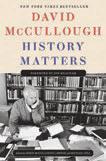
The book is an enjoyable complement to McCullough’s canon, which includes biographies of John Adams and Theodore Roosevelt, and a reminder of why he was one of the greatest historians of our time. It also offers a glance into his approaches to reading and writing.
In a tribute to the late novelist Herman Wouk that’s part of the collection, McCullough underscores the importance of feel-
From page 30
And from Dane, whose comment garnered the most “likes”: “You don’t have much time to make an impression. Dress attractively. Imagine yourself as an open, warm person who’s excited to make a new friend. Avoid the usual ‘what do you do’ small talk and ask fun questions like, ‘What do you do that really excites you?’
The writings also include a short history of his typewriter, a second-hand Royal Standard that he bought in 1965 and used to write every one of his 12 books. A recommended reading list from McCullough underscores how much he viewed literature as necessary for understanding history.
Throughout the book, McCullough’s remarks display concerns about the consequences of historical illiteracy. His pieces also illustrate the power of helping out younger writers and connecting with them.
Overall, the collection offers a brief introduction to McCullough for readers not familiar with his works, but it pales in comparison to the value of reading his books. Hopefully, it will inspire readers to delve into McCullough’s writings.
—Andrew DeMillo
The Roma: A Traveling History, by Madeline Potter, 272 pages, Harper, 2025
Or, ‘What’s something that’s great about you that isn’t obvious at a first meeting?’ Try to like them. After the event is over, you’ll have your choice of dates. Worked for me!”
Laura Stassi is host of the podcast “Dating While Gray: The Grown-Up’s Guide to Love, Sex, and Relationships” and author of Romance Redux: Finding Love in Your Later Years. Send your questions to Laura at newloveafter50@gmail.com.
The Roma: A Travelling History is a fascinating look at a marginalized and misunderstood group of people who have encountered hostility for centuries.
Written by Madeline Potter, a scholar of 19 th-century Gothic literature, the new book recounts how members of the group long have been maligned, enslaved, deported and murdered.
Potter, who grew up Romani in postcommunist Romania, weaves together memoir and archival research into what is described as the first contemporary history of the Romani people.
Instead of being raised in an intricately carved horsedrawn “vardo” that traveled from camp to camp, Potter passed her childhood in a towering Soviet-style highrise, a more typical upbringing as the Romani people increasingly leave life on the road to become “settled.”
for the Gypsy people to be expelled from England due to their alleged crimes, including “robberies,” “palmistry” and “deceit.”
Believed to have migrated from northern India to Europe some 1,500 years ago, and with a language rooted in Sanskrit, the Roma were once thought to have originated in Egypt.


In her book, Potter carries us from England, where she currently lives, to Romania, Bulgaria, Hungary, Austria, Germany, France, Spain, the U.S. West Coast and finally to Sweden.
Potter tells of how King Henry VIII passed the “Egyptians Act” in 1530, calling

In Spain, they have been known as Gitanos. During Spain’s 1749 “Gran Redada de Gitanos” (Great Gypsy Roundup), some 10,000 Roma were detained, and families were separated, with the men sent to work in shipyards and the women and children to factories.
In Nazi Germany, the Reich Office for Combating the Gypsy Menace set the scene for the Roma and related Sinti people to be rounded up and sent to concentration camps alongside Jews, members of the LGBTQ+ community and other minorities. As many as 500,000 Roma and Sinti are estimated to have been murdered by the Nazis and their collaborators during that period.
Despite the continued discrimination, the Roma have made important cultural























Dec. 15
The Institute of Musical Traditions presents its annual Celtic Holiday Show, featuring Robin Bullock on acoustic guitar, Ken Kolodner on hammered dulcimer and Elke Baker on fiddle, performing carols and hymns that span more than 600 years. The concert takes place on Mon., Dec. 15 at 7:30 p.m. at Saint Mark Presbyterian Church, 10701 Old Georgetown Rd., Rockville, MD. Tickets are $30 in advance (plus a $2 box office fee) and $32 at the door. For more information and to reserve tickets, visit bit.ly/Celticmusicconcert or call (301) 960-3655.
From page 32
embrace their passions, try new things (like writing, for instance) and reflect kindly on their past.
“It’s important to look back on your life and on what you’ve done and be aware of the good you’ve done,” she said.
That can be particularly hard for physicians, she said.
“A lot of physicians are perfectionists, and all they think about — and I’ve done this, too, a lot — all the mistakes they’ve made, or the things that didn’t go right.

Answer: To create the Traveling Wilburys, the individual artists needed to — BAND TOGETHER ANSWERS TO JUMBLE
Jumbles: RHYME FROND GAMBIT LETTER
From page 33
contributions, Potter writes. Potter mentions Carmen Amaya, a Spanish Romani who was known in the mid-20th century as the world’s best flamenco dancer. Composer Franz Liszt was so enamored of Hungarian Roma traditions that he absorbed them into his 19thcentury work.






“People die, whether you did the right thing or not. I think being able to accept that you did help people, and that even when things went wrong, that doesn’t invalidate the whole enterprise.”
Drew lives in Rockville, Maryland, where she enjoys hiking in Rock Creek Park. However, her true love is Baltimore.
“I have this special place in my heart for Baltimore,” she said. “I went through so much there that it will always have a special place in my heart. I feel attached to it in a way that I don’t to any other place...I did a lot of growing up there, even though I was technically an adult.”
“There is much sadness in our history, and much pain,” Potter writes. “But importantly it’s not pain that beats at the heart of our story. On each step of my journey, I encountered the wondrous stories of those who have decisively resisted their marginalization, who have refused to be silent and whose stories continue to inspire the Roma today.” —Anita Snow © 2025 The Associated Press. All rights reserved.
ELVIS’S BIRTHDAY TRIBUTE SHOW
Enjoy a nostalgic evening of 1950s rockabilly music. The Basset Hound Boys perform tunes from Sun Records artists like Carl Perkins, Eddie Cochran, Gene Vincent, Roy Orbison and the King himself. The concert takes place on Thu., Jan. 8 from 7 to 9 p.m. at the New Deal Café, 113 Centerway, Roosevelt Center, Greenbelt, MD. Admission is free, with a suggested tip of $10+ for the performers. For more information, call (301) 474-5642.
VIRTUAL POETRY CRAFT TALK
Join Bethesda’s Writer’s Center, America’s oldest poetry journal, Poet Lore, and poet Ally Ang for a craft talk. Ang will also discuss their collection Let the Moon Wobble, in conversation with Emily Holland, the editor of Poet Lore. This free event takes place on Thu., Jan 15 from 7 to 8 p.m. on Zoom. Register at writer.org/event/ally-ang. For more information, email info@writer.org or call (301) 654-8664.













Grandpa gets there early. The Jaguars are warming up.
About 10 parents are congregating along one sideline, including my son. Coffee is being sipped. Smiles are being shared. Six-year-old soccer is on stage, yet again.
Thirty years ago, my son was the player and I was the congregant. The generations trundle on.
to the action. They cajole, shout, implore, instruct.

By
The Jaguars aren’t having a very good season. In fact, they have lost every game. But the bottom line isn’t what youth soccer is about.
It’s about learning and about encouragement. Grandpa is there to offer the latter.
The game begins. The Jaguars immediately lose possession of the ball. The assembled dads shout instructions, a little louder than they might: “Go for it!” “Get back!” “Good pass!”
Grandpa stays silent. He remembers the long, post-match car rides with his thenboy, who would repeat, over and over, how much he hated it when Dad coached from the sideline.
Lesson learned. And lesson lived. But not by these 30- and 40-something fathers. Not yet.
They patrol the sideline, keeping close
Grandpa finds himself standing beside the only mom who has drawn soccer duty at 9 a.m. on a Saturday. She takes one look at Grandpa’s white hair and asks which boy is his grandson.
“Number three,” Grandpa says. She says wow, he’s a really good player. He thanks her and returns the favor. Which child is yours?
“Number six,” she says. At that very moment, number six has tried to steal the ball from an opponent and has fallen flat on his rear end.
His mother laughs. I join her. We share an unspoken truth: Six-year-old soccer is full of such tumbles and fumbles.
She asks whether my son was a soccer player in his day. Indeed, he was. Played for nearly 20 years, all the way onto the college varsity. Can still wow the Jaguars with his ball-balancing tricks.
She’s about to reply when a stray ball comes flying toward us. I catch it. My grandson is 10 feet away.
“Grandpa, you know you’re not supposed to use your hands,” he says.
More laughter. Followed by more trouble for the Jaguars. They give up three
goals in quick succession. Shoulders sag with disappointment.
The wind picks up. The game is nearly over. I pull my jacket tighter and conjure up soccer memories from the 1990s.
My son’s first goal. His team’s first championship. Our first team overnight trip, when we all ate dinner in a drab Applebee’s and pronounced the fried chicken terrific.
Does a father ever stop living through his son in some ways? Does a grandfather transfer that to his grandson?
And if he does — if he has, on this blustery morning — how should that loving/ caring/rooting be expressed?
Grandpa knows the answer. He can’t be Father Number Two. He has to be a plainand-simple fan, an aging observer. And he has to root for the whole team, not just the kid with his last name.
“Good job, Jaguars!” Grandpa shouts. “Well done!” …. “Keep going, guys!” Utterly vanilla, but loud enough (perhaps) to land on a squad of young ears.
The Jaguar fathers are more technical. They shout about using the inside of the foot, about keeping your head up so you can see the field.
They can’t help themselves. They are coaches in cutoffs. The only things they lack are whistles and clipboards.
Grandpa remembers such dads from Way Back When. Intensity and hope, marbled with expectation.
Sometimes sideline coaching helped. More often, it soured the child on the game. He would transfer to some other pastime — music, maybe, or playing on a computer. In my day, it wasn’t unheard of for fathers to discuss college soccer scholarships for their boys. Yes, at age six.
That was pressure — too much pressure.
On this day, there’s no such fantasizing. The game ends. The final score is something like 8-2.
My grandson comes over for a lift-himup hug from his dad. I’m right behind, with another.
“You played really well,” I say.
My grandson looks at me with his big blue eyes. “Thanks, Grandpa,” he says. “I tried.”
It wasn’t the words I had uttered, either during the game or after it, that had landed with him. It was my presence.
The season has now ended. But the Jaguars will be out there again once spring has sprung, their scarlet shirts freshly washed, their hopes again high.
A guy with white hair will be there, too. Bob Levey is a national award-winning columnist.












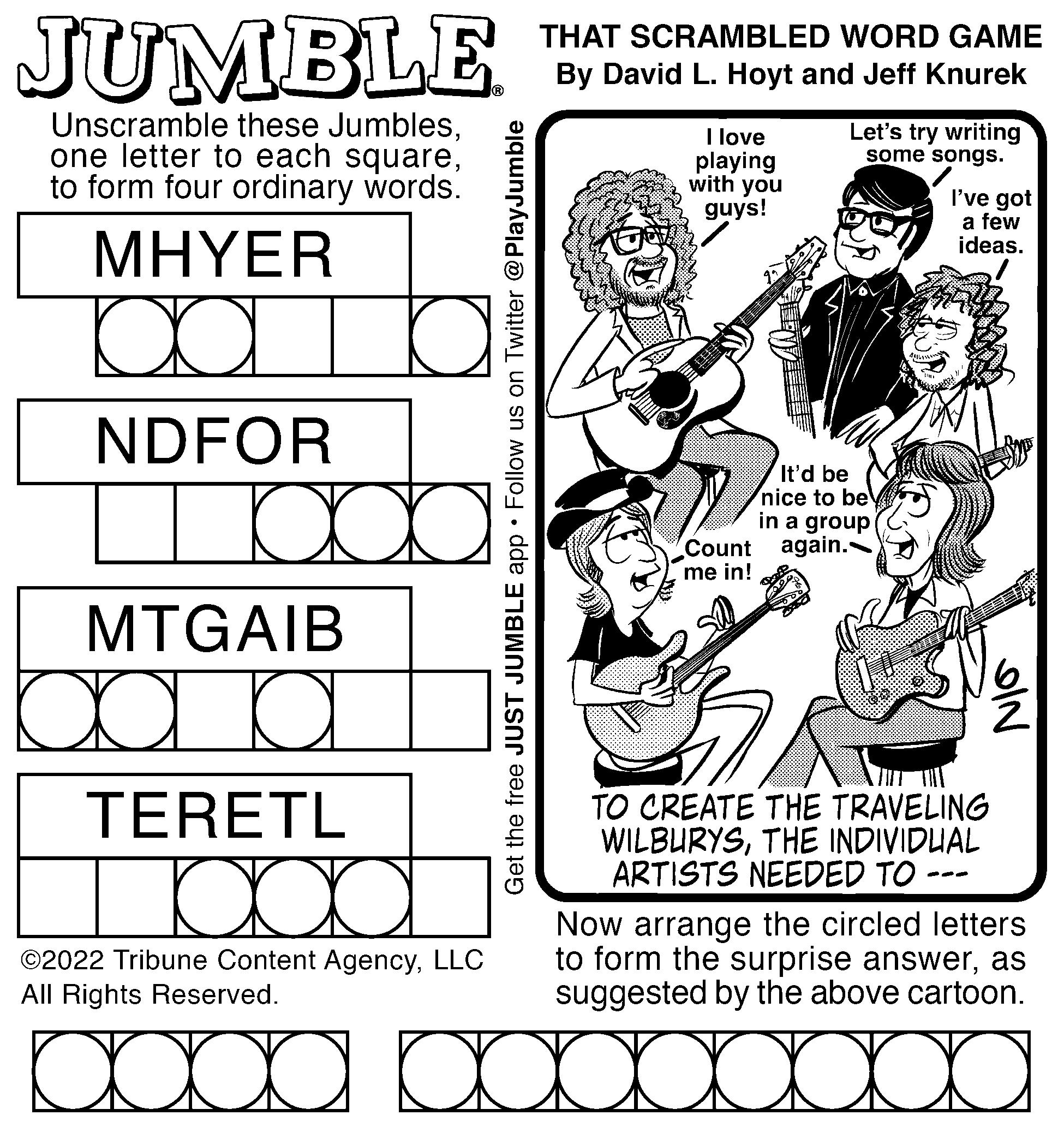
By Stephen Sherr
Across
1. Forehead-obscuring cut
6. Ligament injured 52 times in 2023 NFL games
9. Love handles (described less lovingly)
13. Macaroni shape
14. Regret taking a French street
15. Pro ___
16. Oscar the Grouch, to Big Bird
19. Actor Sharif
20. “It’s ___” (The mission is on!)
21. Introduction
23. Large amount
26. Just a sample of breakfast cereal
28. Recycling bin deposit
29. Nickname for San Luis Obispo
30. Ferris Bueller viewed some on his day off
31. Raggedy doll
32. Prefix after di- and tri-
35. Lunkheads
39. There’s ___ (except, of course, in the answer to this clue)
43. One who previously saw cicadas as a toddler
44. Part of a Big Bad Wolf costume
45. Paycheck deduction
46. Health resort
49. Letters found in a “needle in a haystack”
50. Before, poetically
51. One who makes do with a blurry selfie
56. Got 100% on the final
57. Conduct a Civil War exhibition
58. North Carolina ___ Heals
60. Musk, who changed Twitter to X in 2023
61. The new house is not ready, for example
66. Monthly util. bill
67. Bit of baby babble
68. One who converts English to Pig Latin
69. Some choose to pick their own
70. Column heading on a financial rpt.
71. It’s more than just a suggestion
Down
1. Request table food
2. First letters of an alphabetic state list
3. Last part of an SSN
Exceed the “best before” date
5. Trade show giveaways
6. “We ___ not amused”
7. Serving of tea
8. Become a better AI
9. Everything
10. A ewe usually has two per litter
11. ___ of Two Cities
12. More like a tree in Winter than Spring
17. Classy glass
18. “___ smile be your umbrella”
22. Atmospheric prefix
23. Insufficient
24. Summer Olympics vehicle
25. Grammy Hall’s granddaughter, played by Diane Keaton
27. Tax-advantaged retirement plans
29. Place to board the B&O
33. ___ Tin Tin
34. In unison
36. 15th-century pyramid builder
37. Widen, as jeans legs
38. Determined the gender of chicks
40. One occurrence
41. Rico or Vallarta
42. Ending for comm- or comp-
47. It’s in the middle of the poker table
48. Brain hormone (and anagram of CHAT)
51. Get ready for a hot date
52. Word called out at an unmanned store counter
53. They usually sit in the center, next to the flutes
54. Suffix for type of study
55. Winner of 19% of the popular vote in 1992
56. Bulletproof vest, for example
59. Simplified name for the Atlantic Ritchfield Company
62. One of Ned Flanders’ sons
63. Like the numbers in 7-Eleven and Forever 21
64. Main letter in Vanderbilt and Villanova logos
65. Bark up the wrong tree
From page 2
Dear Editor:
First things first. I want to tell you how much I enjoy your newspaper. It is a real service to the community. Occasionally when I read an article in a paper the thought will cross my mind, “This deserves my response,” but inertia takes over, and I let the moment pass.
However, your request for responses to your editorial, “How we learn to be afraid,” I could not ignore.
This past September I went on a poorly planned trip to Lisbon. I should have gone on a tour. But based on my past experiences, I thought I would do fine.
However, I never felt like I had a firm footing on those glazed-tile floors. Well, the first full day I was there I slipped on the stairs in the metro. I went down about four steps and injured my left hand and knee. I got treatment at a private hospital and did not go out again until returning home.
Wobbling slowly around with a cast on my hand, I entered into “the land of the infirm.” People looked at me differently. Many would open doors for me. I looked at them with caution. Fearing collisions, I gave others a wide berth.
I’ve started noticing other people with limps, thinking to myself, “Behind every limp is a story.”
Now I’m cautious and afraid. Traveling no longer entices me. Like Dorothy from The Wizard of Oz, I’m going to stay in my own back yard.
Marian Criswell Via email
Dear Editor:
I just read your article on how to prevent falls and fall injuries (“Watch your step! How to prevent fall injuries,” October 2025), and it was super helpful.
I just volunteered at a senior center, and I took your advice on preventing slips and trips. Most of the seniors were at risk, so I made sure I was careful when leading them to their next activity.
For example, I adjusted any rugs I thought were in the way or were a slipping hazard during a morning exercise session. I brought out chairs for those who needed



a little extra support.
Using your warnings and advice, I am now more observant and cautious of my surroundings. Thank you for writing your article of caution.
Teague Schneider BSA Troop 1100 Sparks, MD
Dec. 16
Edmonson Farm was one of the largest Black-owned farms in Montgomery County before the Civil War. Now part of the land that makes up Leisure World, it was once owned by Paul Edmonson, a free Black man active in the abolitionist movement who tried to free his wife and 14 children from slavery. This free presentation about his life by Montgomery History takes place on Tue., Dec. 16 at 2 p.m. on Zoom. To register, visit bit.ly/Montgomeryhistory.
Fairfax Court Appointed Special Advocates (CASA) is seeking volunteers to advocate for children involved in abuse and neglect cases in the Fairfax County court system. For more information, call (703) 273-3526 or visit fairfaxcasa.org/volunteer.
15+
This virtual creative writing workshop is available to active duty members, veterans and military families. Participants read a short piece of writing, discuss what makes it effective, and then write their own stories. Led by writer and U.S. Army veteran Kevin Basl, the class takes place on the first and third Thursday of each month from 3:30 to 4:30 p.m. No experience required. Register at bit.ly/militaryvoicesworkshop.
Gaithersburg’s Winter Lights Festival will sparkle brightly with over 450 beautiful lights at Seneca Creek State Park. The 3.5mile drive features illuminated displays and trees, open nightly from 6 p.m. to 9 p.m., and until 10 p.m. on Friday and Saturday. Located at 11950 Clopper Rd., Gaithersburg, MD, it runs through Dec. 31, except for Dec. 25. Tickets, sold per vehicle, are $15 Monday through Thursday and $25 Friday through Sunday. Reserve yours at bit.ly/Gaithersburgwinterlights. For more details, email winterlights@gaithersburgmd.gov.
The Beacon prints classified advertising under the following headings: Business & Employment Opportunities; Caregivers; Computer Services; Entertainment; For Sale; For Sale/Rent: Real Estate; Free; Health; Home/ Handyman Services; Miscellaneous; Obituaries; Personals; Personal Services; Vacation Opportunities; and Wanted. For submission guidelines and deadlines, see the box on page 39.
The Beacon does not knowingly accept obscene, offensive, harmful, or fraudulent advertising. However, we do not investigate any advertisers or their products and cannot accept responsibility for the integrity of either. Respondents to classified advertising should always use caution and their best judgment.
EMPLOYMENT & REAL ESTATE ADS:
We will not knowingly or intentionally accept advertising in violation of federal, state, and local laws prohibiting discrimination based on race, color, national origin, sex, familial status or handicap in connection with employment or the sale or rental of real estate.
A HOME HEALTHCARE- Experienced nurses, CNA, GNA are available 24/7. Cooking, companionship, personal care, housekeeping, driving. Full/Part-time or live-in care. 15 years’ experience. 240-533-6599.
MOBILE HAIR & NAIL SERVICES - WE COME TO YOU. Professional Licensed Hair Stylist. Women and Men’s Services - All Hair Types. Cuts, Styles, Roller Sets, Color, Perms, Men’s Cuts & Facial Grooming, Manicures & more. Call 301-338-8251.
A CARE AGENCY - Been in business for more than 10 years. Experienced nurses, CNAs, GNAs. Any hours you need. Flat rate for live-in. Duties include cooking, housekeeping, bathing, errands, etc. Tel: 667-231-8235.
COMPUTERS, TELEVISIONS, CELL
PHONE Help For Seniors. We offer patient and thorough help for seniors with all matter of technology. We come to your home. We service MD, VA and DC. Call Senior Tech Pro at 301337-0028. Available 24/7 Ask for Philip.
NEW YEAR’S EVE BALLROOM DINNER
DANCE. Wednesday, December 31, 2025. Full gourmet dinner, dancing, and entertainment to bring in and celebrate the New Year. Hollywood Ballroom Dance Center, Silver Spring. Visit www.hollywoodBallroom.com for details.
UP TO $15,000.00 OF GUARANTEED LIFE INSURANCE! No medical exam or health questions. Cash to help pay funeral and other final expenses. Call Physicians Life Insurance Company - 866-212-1092 or visit www.Life55plus.info/beacon
NOW LEASING — Affordable 1-Bedroom Senior Apartment (62+) in Washington, DC. Friendship Area | Immediate Move-In Available. Discover comfortable, affordable living at our 62+ senior apartment community in the heart of Washington, DC’s Friendship neighborhood. 1Bedroom Apartment Home. Starting at $1,384/month (50% AMI). Washer & Dryer in Unit. Residents Pay Electric & Water. Amenities Include: Fitness Center, Yoga Studio, Onsite Hair Salon, Hobby Room, And more! Income Requirements: Minimum Income: $38,161, Maximum Income: $54,150 (per 50% AMI guidelines). Affordable senior living in a vibrant, amenityrich community! Contact us for open house dates and times. Call Today: 301-453-4655.
DISCOVER NORTH STAR NAVIGATORS: Your Trusted Partner in Elder Support Services. At North Star Navigators, we are dedicated to making a positive impact in the lives of our aging population. We understand the challenges that come with aging and are driven by a personal quest to enhance the well-being of seniors. Our telehealth services include: - Comprehensive Assessments & Recommendations - Golden Years Planning - Healthy Ship (Membership). Get Ready to Set Sail with North Star Navigators! Where YOU remain the Captain, and our Stars guide the way. Visit NorthStarNavigators.net or call 833-735-1983 for more information. Your Trusted Team: Anchored in Compassion, Driven by Passion.
IT’S NEVER TOO LATE TO CHANGE YOUR MIND. At Mindcraft Hypnotherapy you can create the changes you want to live a life you love. Phobias - Grief - Habits - Pain - Limiting beliefs. Silver Spring, MD 20902. 301-7541236 mindcrafthypnotherapy.com
I AM A LICENSED CERTIFIED NURSING ASSISTANT with 10 years of experience. I am looking for a full-time job. I will provide health care services, daily grooming, personal hygiene, light housekeeping and companionship. Please call Bola 301-996-5180.
DENTAL INSURANCE from Physicians Mutual Insurance Company. Coverage for 400 plus procedures. Real dental insurance - NOT just a discount plan. Do not wait! Call now! Get your FREE Dental Information Kit with all the details! 1-844366-1003 www.dental50plus.com/320 #6258
MOBILEHELP, America’s Premier Mobile Medical Alert System. Whether You’re Home or Away. For Safety and Peace of Mind. No Long Term Contracts! Free Brochure! Call Today! 1240-650-9189.
PORTABLE OXYGEN CONCENTRATOR May Be Covered by Medicare! Reclaim independence and mobility with the compact design and long-lasting battery of Inogen One. Free information kit! Call 855-851-0949.
AMERICAN RESIDENTIAL HEATING & COOLING. As temps outside start to climb, the season for savings is now. $49 cooling or heating system tune up. Save up to $2000 on a new heating and cooling system (restrictions apply.) FREE estimates. Many payment options available. Licensed and insured professionals. Call today 1-877-691-0273.
JACUZZI BATH REMODEL can install a new, custom bath or shower in as little as one day. For a limited time, waiving ALL installation costs! (Additional terms apply. Subject to change and vary by dealer. (Offer ends 9/30/25.) Call 1833-994-0538.
NO MORE CLEANING OUT GUTTERS. Guaranteed! LeafFilter is the most advanced gutter protection for your home, backed by a noclog guarantee and lifetime transferable warranty. Call today 1-855-977-6078 to schedule a FREE inspection and no obligation estimate. Plus get 20% off! Seniors and military save an additional 10%. Restrictions apply, see representative for warranty and offer details.
CONSUMER CELLULAR - the same reliable, nationwide coverage as the largest carriers. No long-term contract, no hidden fees and activation is free. All plans feature unlimited talk and text, starting at just $20/month. For more information, call 1-833-742-1303.
BECOME A PUBLISHED AUTHOR. We want to Read Your Book! Dorrance PublishingTrusted by Authors Since 1920. Book manuscript submissions currently being reviewed. Comprehensive Services: Consultation, Production, Promotion and Distribution. Call for Your Free Author’s Guide 1-833-992-0110 or visit dorranceinfo.com/beacon
MEN & LADIES. Licensed HAIR, NAILS, FACIALS. I will come to your home if you live in the Silver Spring zip codes. Reasonable rates concentration mainly in LW. For information and appointments call 7 days. Kim 301-792-4936.
FOR LADIES ONLY. Relaxing in-home massages and therapists who travel to your home or office, with everything necessary to provide an authentic therapeutic experience. For information and appointments text 7 days Luis 571-6635899. Just 70$/hour
DIRECTV - All your entertainment. Nothing on your roof! Sign up for Directv and get your first three months of Max, Paramount+, Showtime, Starz, MGM+ and Cinemax included. Choice package $84.99/mo. Some restrictions apply. Call DIRECTV 1-888-572-4953.
CASH FOR JEWELRY: Buying jewelry, diamonds, gold, platinum, silver, watches, coins, flatware, etc. Ask for Tom. Call anytime, 301654-8678 (Reg. 883).
WILL BUY MILITARY, WWII, WWI, Civil War memorabilia items. Uniforms, weapons, helmets, photos, war souvenirs, medals, photos or any other items associated with U.S., German, Japanese or other military history. Call Dave (240-464-0958) or email (david.obal63@gmail.com).
COINS, STAMPS, & AUTOGRAPHS WANTED. Paying top prices. Free estimatesWill travel. No collection too large or too small. 50 years of experience. Licensed. Member of major associations. Call Dirk at 301-704-5453 or email dirkkitchin@earthlink.net.
BOOKSHELVES OVERFLOWING? Boxes of books? Stacks of CDs? We’ll haul them off — FREE pickup, same day service available. Easy declutter, no stress. Call 703-980-7421 or mdbookpickup@gmail.com.
BUYING ESTATES, FULL OR PARTIAL, large or small. Need a house cleared in a hurry, I can get it done. Also buying individual small, pretty things such as Herend, Royal Copenhagen and vintage holiday decorations. Call Susan (301) 785-1129.
PAYING TOP CASH FOR ANTIQUES AND COLLECTIBLES. Housecalls made with prompt, courteous service seven days a week and 25 years of experience! Buying toys, trains, militaria, glassware, advertising merchandise, paper items and much more! Contact Mason or Megan at: 443-306-8816.
WANTED: OLDER VIOLINS, GUITARS, BANJOS, MANDOLINS, UKULELES. Musician/collector will pay cash for older string instruments. Jack (301) 279-2158, leave message & phone number (please speak slowly).
CASH FOR ESTATES; moving, downsizing, single item, or whole estate. I buy a wide range of items. Gary Roman, TheAtticLLC.com. 301520-0755.
CASH FOR RECORDS, CDS AND DVDS. Best price guaranteed. Free appraisals. All types of music {33, 45, 78 & CDs.} Also buying turntables and stereo equipment. Will make house calls with CURBSIDE PICKUPS. Call or text Steve at 301-646-5403.
ALWAYS BUYING SILVER, gold-filled & gold jewelry, Old Silverware & holloware marked “Sterling”, old fountain pens, old tobacco pipes, dental gold, the old stuff... What do you have? Call or text Alex at 571-426-5363. DMW area I’ll pick up!
I BUY OLD GUNS: Military/Civilian & MILITARY MEMORABILIA. I am a licensed Firearms Dealer and can legally purchase from you. I also buy medals, uniforms & insignia. Tim Frank 301-201-0241. historian1975@gmail.com. www.midatlanticmilitaryantiques.com
CEMETERY PLOTS Ft. Lincoln Cemetery. Brentwood, MD. 4 plots Section K-B Lot 30 Sites 1-4. Single depth. Monument privilege. Number of plots and price negotiable. Contact Steve Frank. stevefrank22@verizon.net. 301-8075645.
NEW WINDOWS FROM WINDOW NATION. Special money saving offer zero down, zero payments, zero interest for TWO years AND buy 2 windows and get 2 FREE! Offer is valid for select models. Labor not included. Other restrictions apply. Call Window Nation today! 855-909-2278.
SETTLING AN ESTATE? Downsizing Specialists, LLC can help with the overwhelm. Our proven process helps you thoughtfully decide what to keep, gift, sell, donate, or discard with compassion and clarity at every step. Services include estate liquidation, downsizing, estate sales, storage unit clean-outs, junk removal. We buy estates, vehicles, & houses. Free estimates. Local. Family Owned. Licensed. Insured. Better Business Bureau A+ Certified Call/Text Philip 301-219-3600 DownsizingSpecialists.com
SLOWING DOWN AFTER 44 YEARS of contracting. Small to medium jobs mainly residential but will do some commercial also. Will work all over the DC MD and VA areas. $45.00 from arrival on job. Andy 703-906-5429.
THE BATHROOM OF YOUR DREAMS in as little as 1 day. Limited Time Offer - $1000 off or No Payments and No Interest for 18 months for customers who qualify. BCI Bath & Shower. Many options available. Quality materials & professional installation. Senior & Military Discounts Available. Call Today! 1-855-653-0087.
DON’T LET THE STAIRS LIMIT YOUR MOBILITY! Discover the ideal solution for anyone who struggles on the stairs, is concerned about a fall or wants to regain access to their entire home. Call AmeriGlide today! 1-866-3655170.
During this free event, counselors from the Virginia Department of Veterans Services will discuss federal, state and local programs available to Virginia veterans. Register for a free advising appointment at bit.ly/VAveteranprogram. Appointments will be held on Thu., Dec. 18 from 10 a.m. to 2 p.m. at the National Museum of the United States Army, 1775 Liberty Dr., Fort Belvoir, VA. For more information, email customerservice@armyhistory.org or call (800) 506-2672.
Learn about the history of one of the last Union forts built to protect Washington during the Civil War. The tour will explore the fort’s role in the conflict and the lives of the soldiers stationed there. Meet at Fort C.F. Smith Park, 2411 N. 24th St., Arlington, VA, on Sat., Dec. 20 from 1 to 2 p.m. This event is free, and registration isn’t required. For more information, contact Blake Lindsey at (703) 228-4775 or blindsey1@arlingtonva.us. BEACON BITS Dec. 18 Dec. 20
Visit the Acoustic Café in December to celebrate and support local musicians Michelle Swan with Caleb Hacker. This free performance, sponsored by the Walter Reed 55+ Advisory Committee and the Alliance for Arlington Senior Programs, is open to everyone. It takes place on Tue., Dec. 16 from 7 to 8:30 p.m. at the Walter Reed Center, 2909 16th St. S, Arlington, VA. For more information, visit facebook.com/acoustic.cafe.arlington.
The well-known historical drama portrays Sir Thomas More’s final years under Henry VIII of England. In partnership with Kentlands Community Players, performances run from Jan. 9 to 25 on Fridays and Saturdays at 8 p.m. and Sundays at 2 p.m. at the Arts Barn, 311 Kent Square Rd., Gaithersburg, MD. Tickets cost $25 and can be purchased at bit.ly/GaithersburgTheater. For more information, call (301) 258-6394 or email artsbarn@gaithersburgmd.gov.
All classified ads must be submitted and paid for online, via our website, www.thebeaconnewspapers.com/classifieds
Deadlines and Payments: To appear in the next issue, your ad text and payment must be entered by the 5th of the preceding month (for Baltimore and Howard County editions); by the 20th (for Washington edition).
Cost will be based on the number of characters and spaces in your ad: • $25 for 1-250 • $35 for 251-500. • $50 for 501-750 (maximum length). The website will calculate this amount for you.
Note: Maryland contractors must provide a valid MHIC number.
• Each real estate listing qualifies as one ad. • All ads are subject to publisher’s discretion. Payment will be refunded if unacceptable for any reason. To place your classified ad, visit www.thebeaconnewspapers.com/classifieds
Get a $115 credit every month for OTC, plus healthy food and utilities for qualifying enrollees
Got Medicare and Medicaid? With UHC Dual Choice DC-Y2 (PPO D-SNP), get more help with your everyday needs. A credit will be loaded onto your UnitedHealthcare UCard® every month to help pay for over-the-counter products, plus healthy food and utilities for qualifying enrollees.
Use your OTC, healthy food and utility bill credit on your UCard:
Choose from thousands of OTC products, like first aid supplies, pain relievers and more
Buy healthy foods like fruits and vegetables, meat and seafood, dairy products and water
Pay home utilities like electricity, heat, water and internet
Plus, you can use your monthly credit on wellness support including in-home services, weight management counseling, caregiver relief, select fitness items and more
Let’s connect today
1-844-811-6327, TTY 711
8 a.m. – 8 p.m. local time, 7 days a week ShopUHC.com uhccp.com/DC